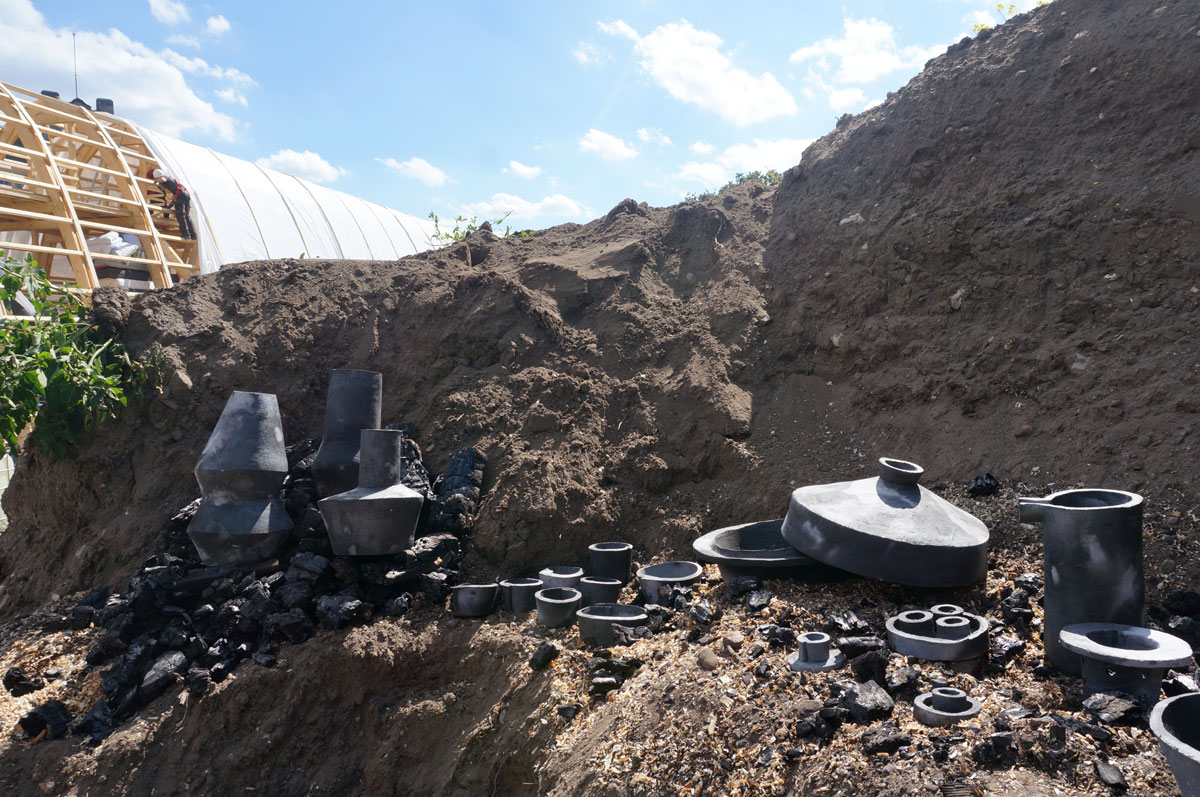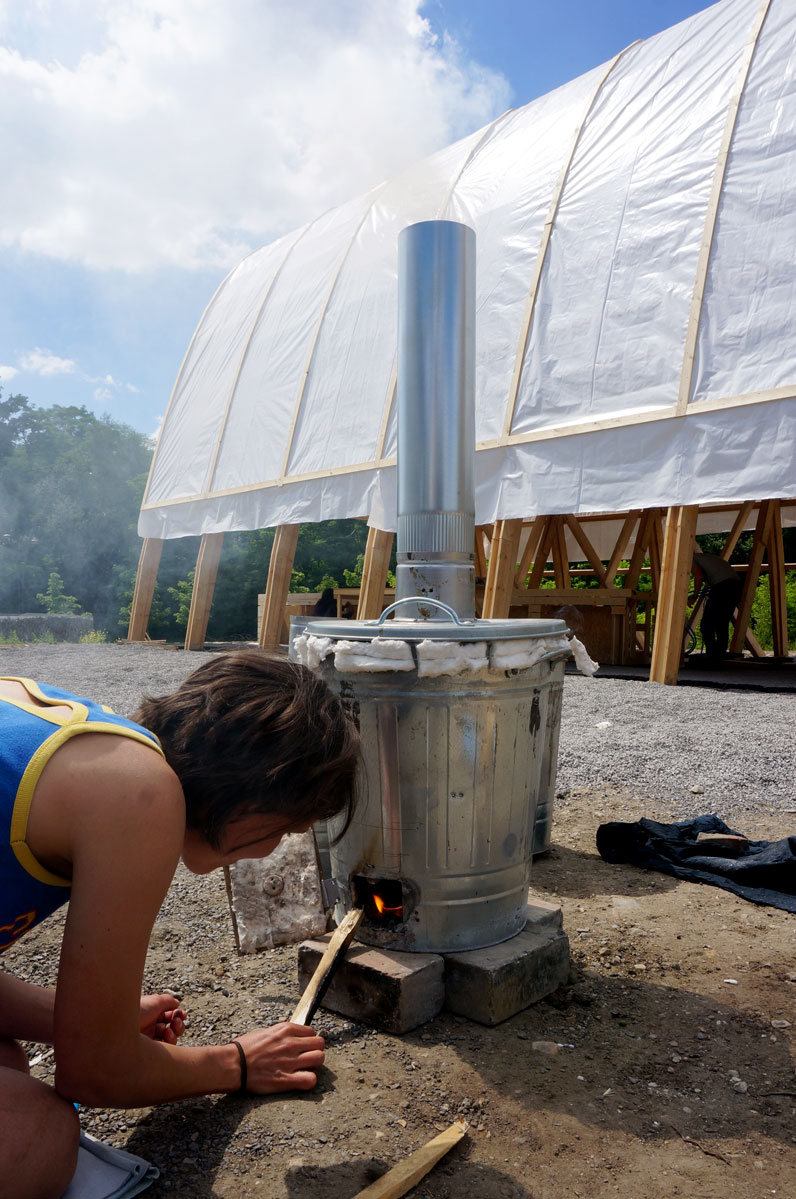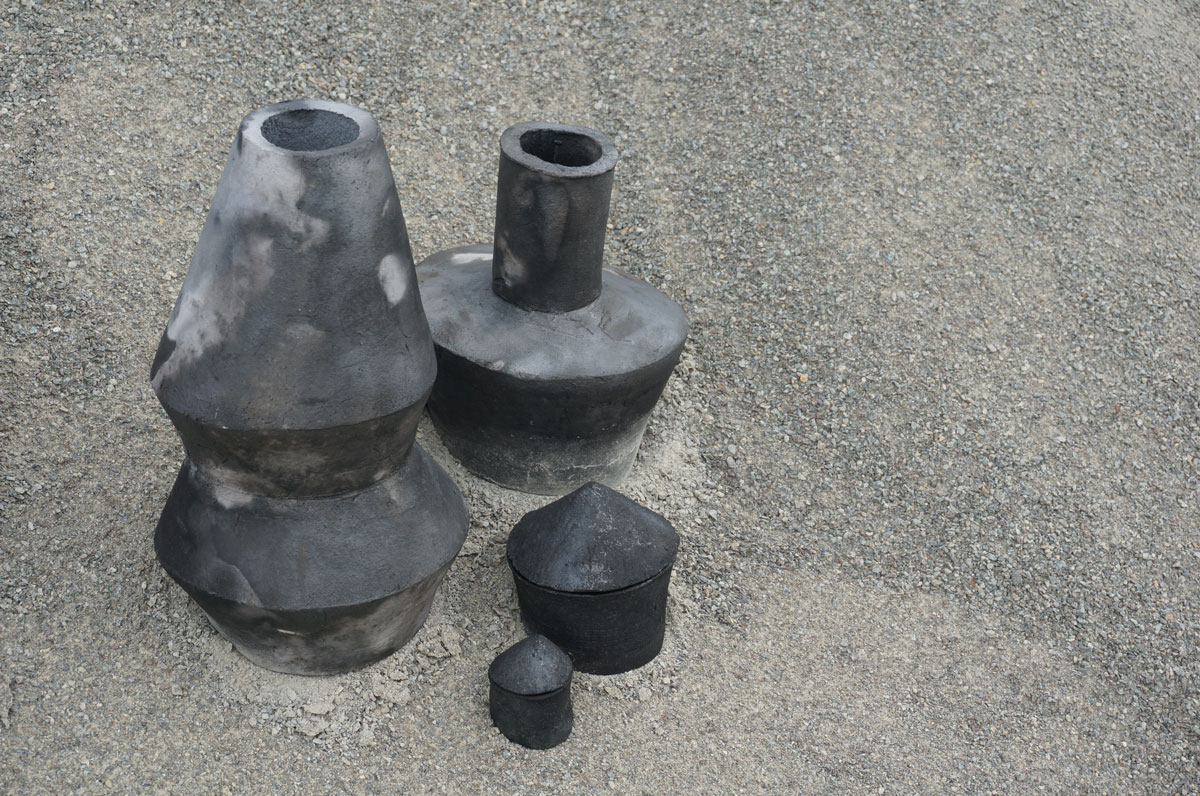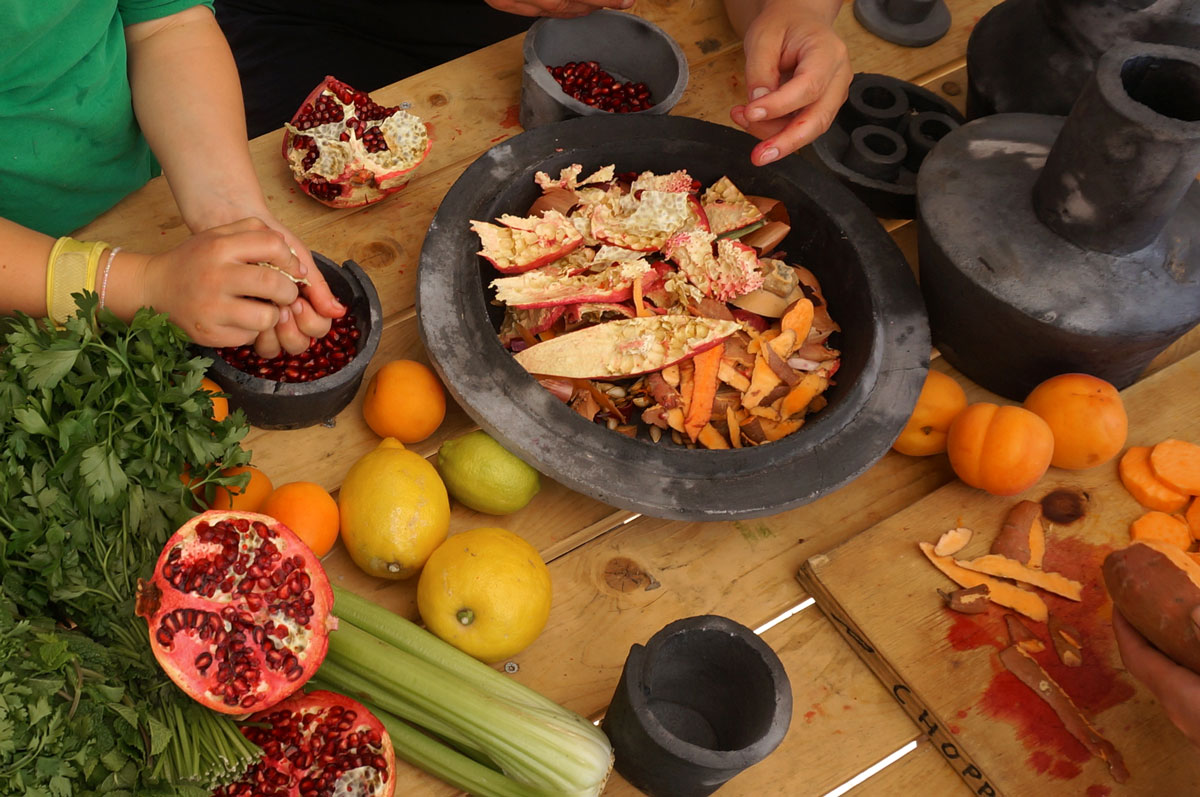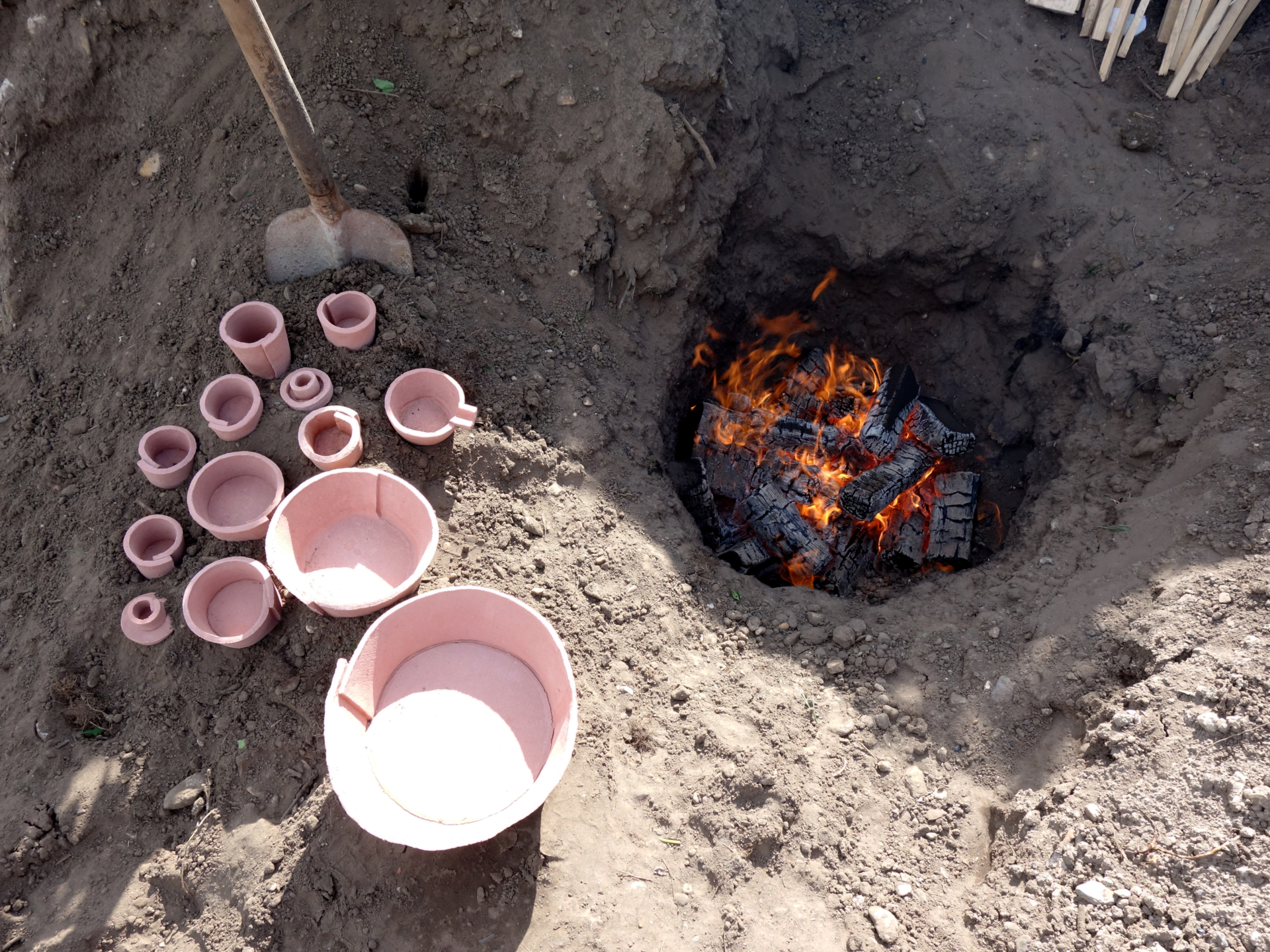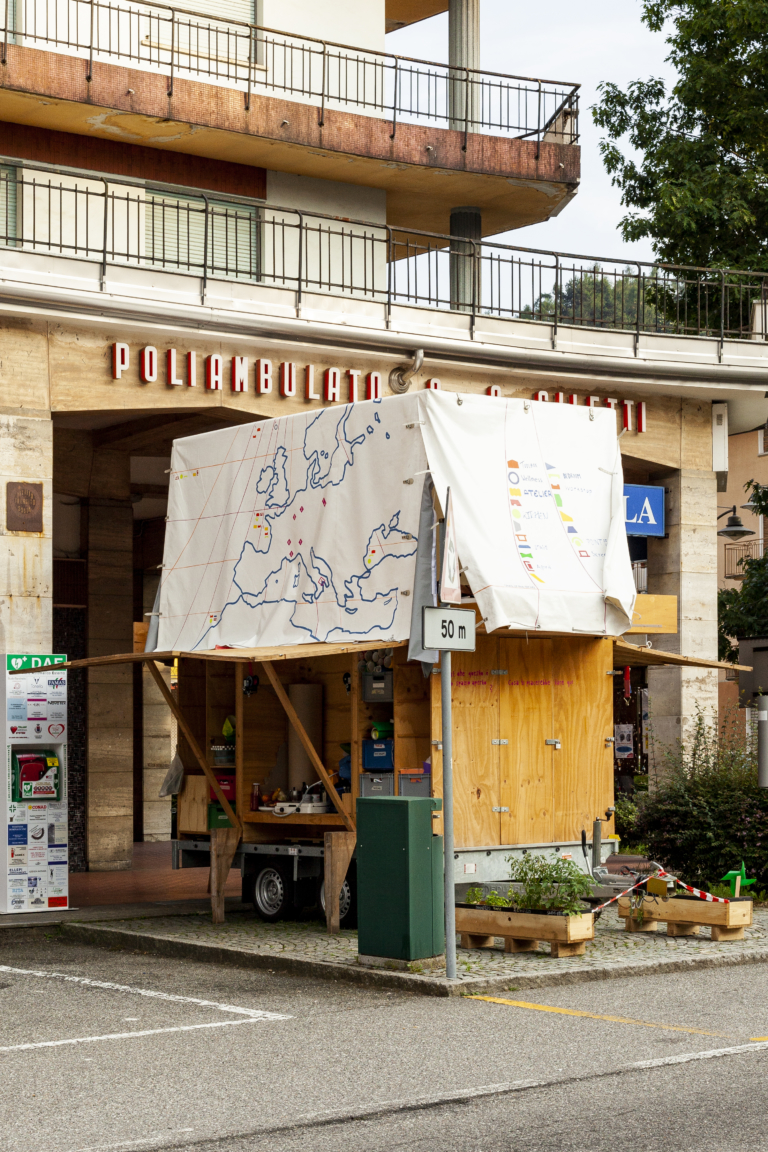Project

In the summer of 2017 we will provide a living support structure, on top of a former mining site in Genk, for a social- and experimental laboratory.
The era of mining and the presence of the company Ford have given strong identities to the city of Genk. Constructlab intervenes in a moment where the search for a new strong identity permits an experimentation and a reflection on visions of the future.
A living support structure will be conceived to welcome the public; a support structure is a building tool that stabilises a construction during its installation, also used in the mines to create the deepest tunnels. In the same sense it can be applied metaphorically as a social, artistic and community-shaping tool to be a support and catalyst in a first phase of appropriation.
In connection to the research activities already happening and to be established at Thor Park, we propose an applied research laboratory that is situated somewhere between artistic experimentation and public research. It positions itself as a complementary approach to academic scientific models, to deal with new technologies in an accessible and associative way.
These moments will be captured in a tangible object, a generic brick that we will design and make together from waste materials. The brick as a memory of our time together at Thor Park will be the building stone for the new entrance-gate to the park, but also a new material that can enter into the existing Belgian brick market.
To try to produce a monumental arch as a result from this collective effort is like wondering physically, if now could be a moment of paradigm shift from the faith in efficiency and productivity to a smaller, transparent production in the city that incorporates deviation and allows change.
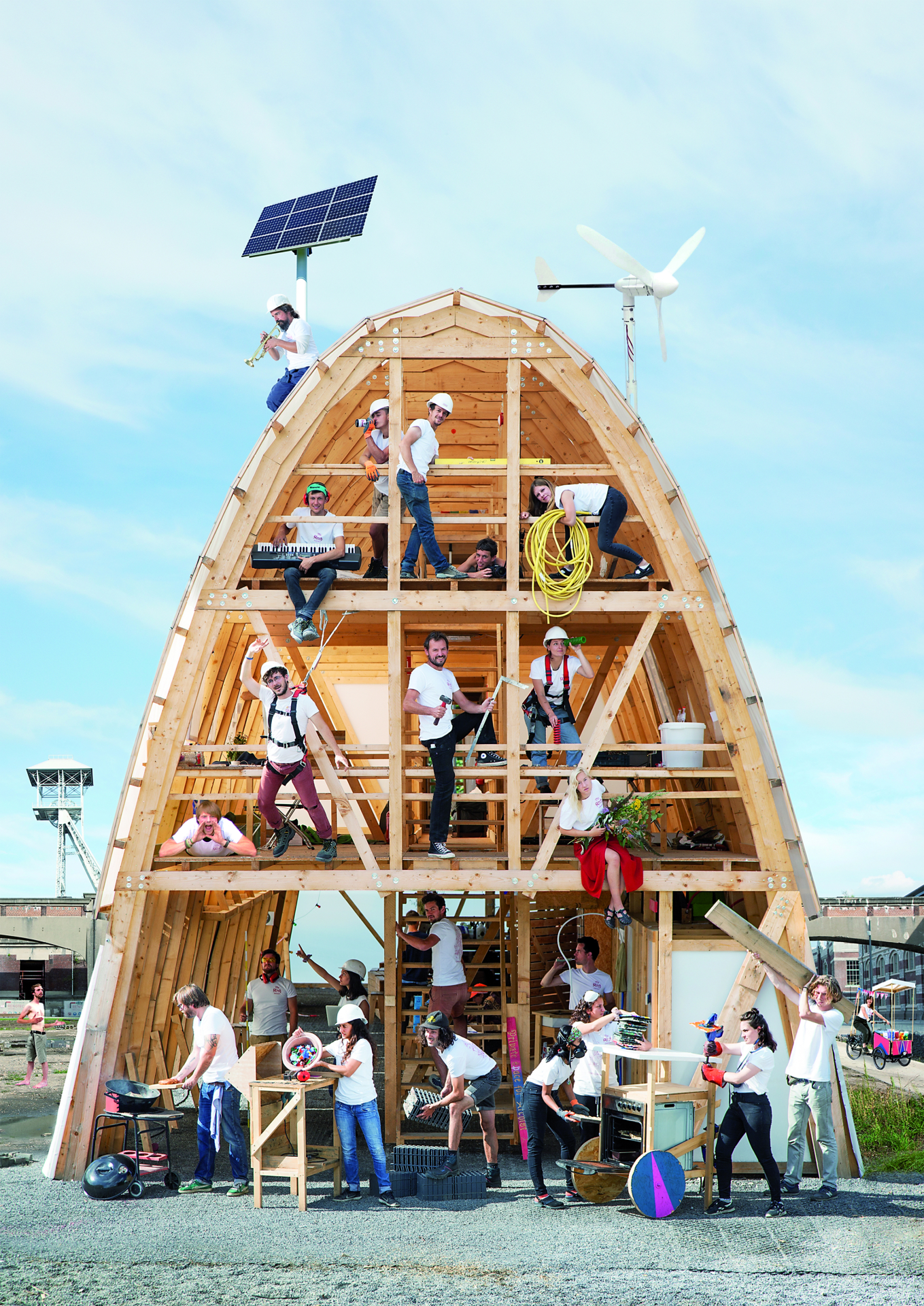
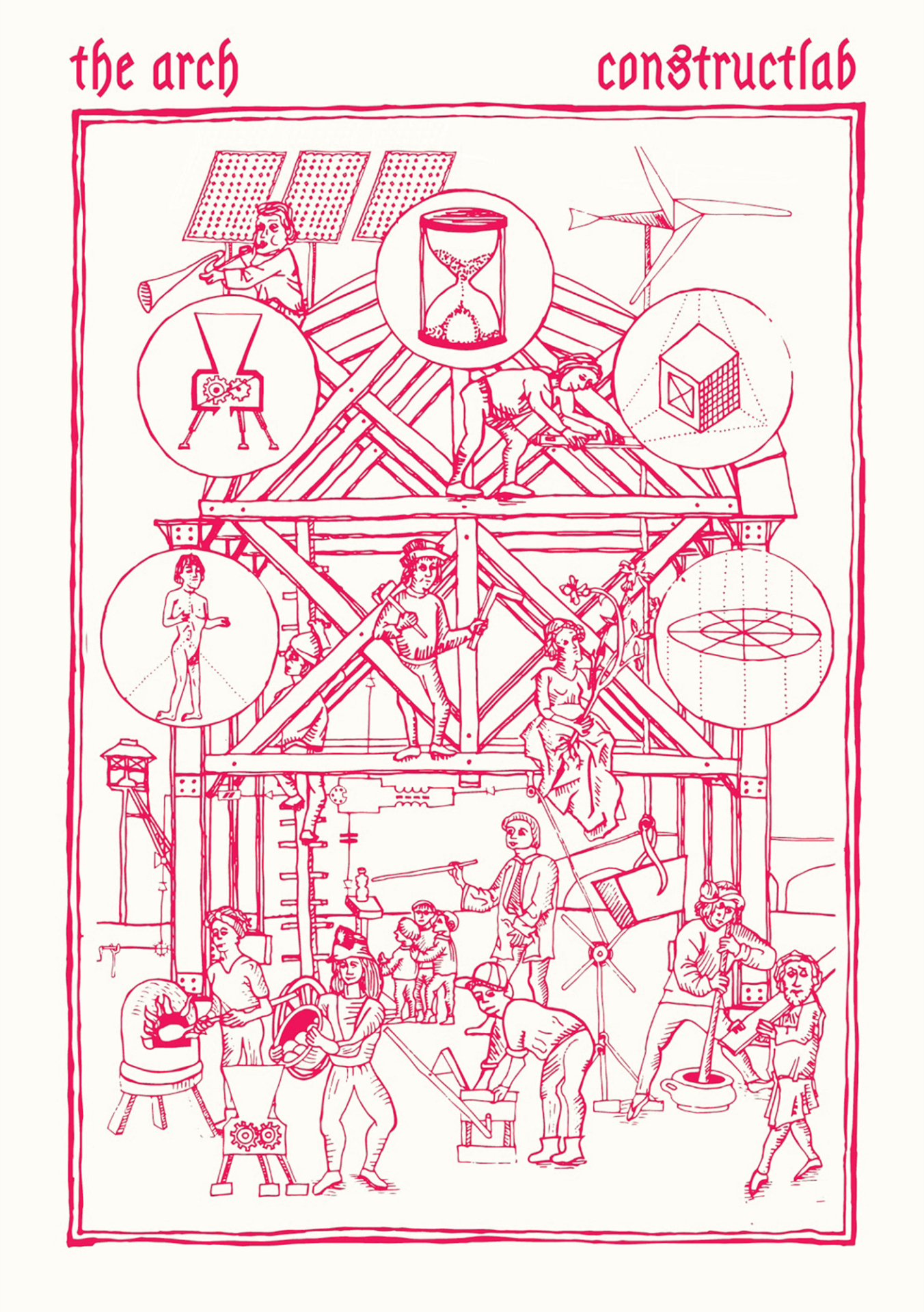
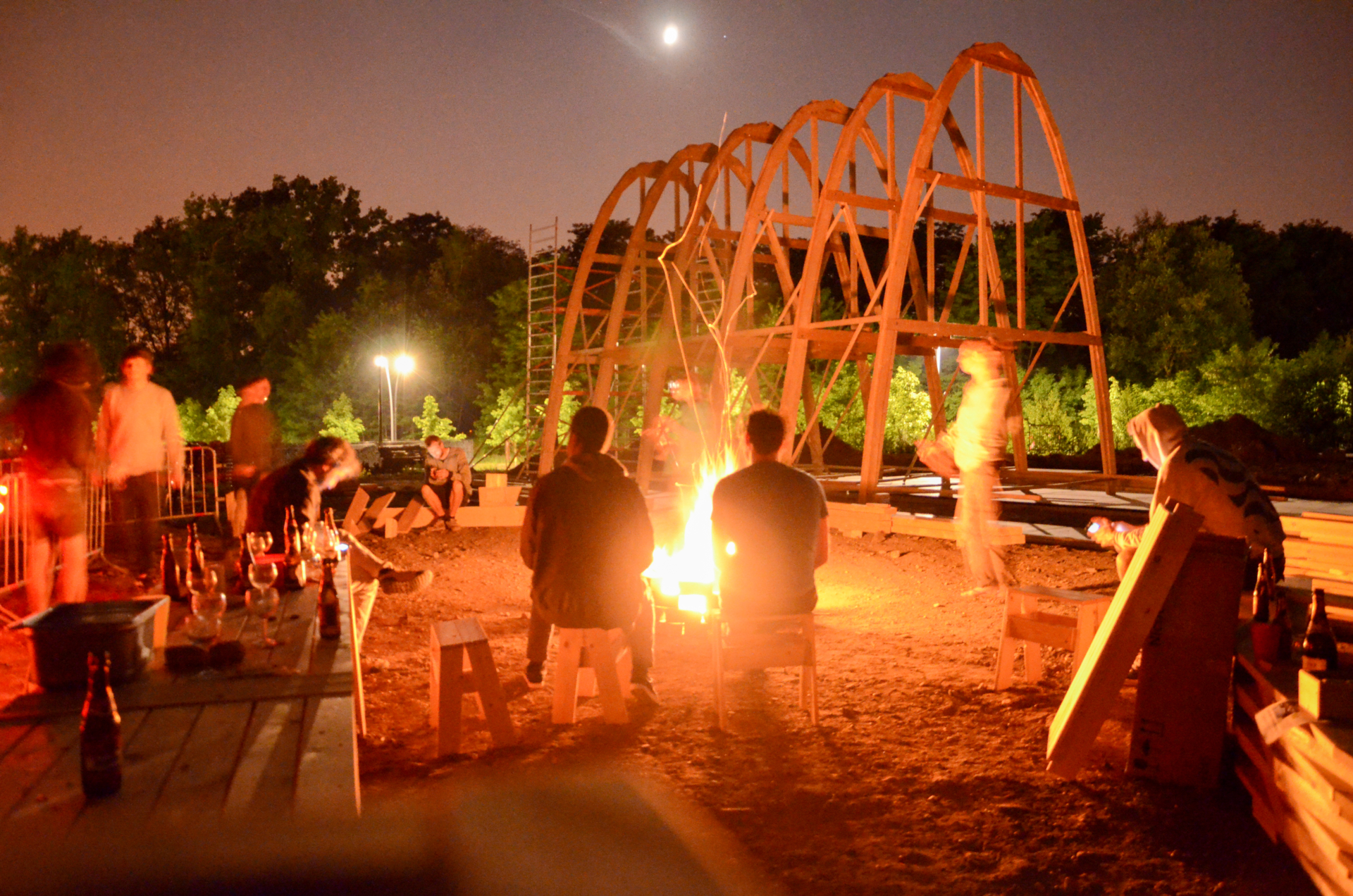
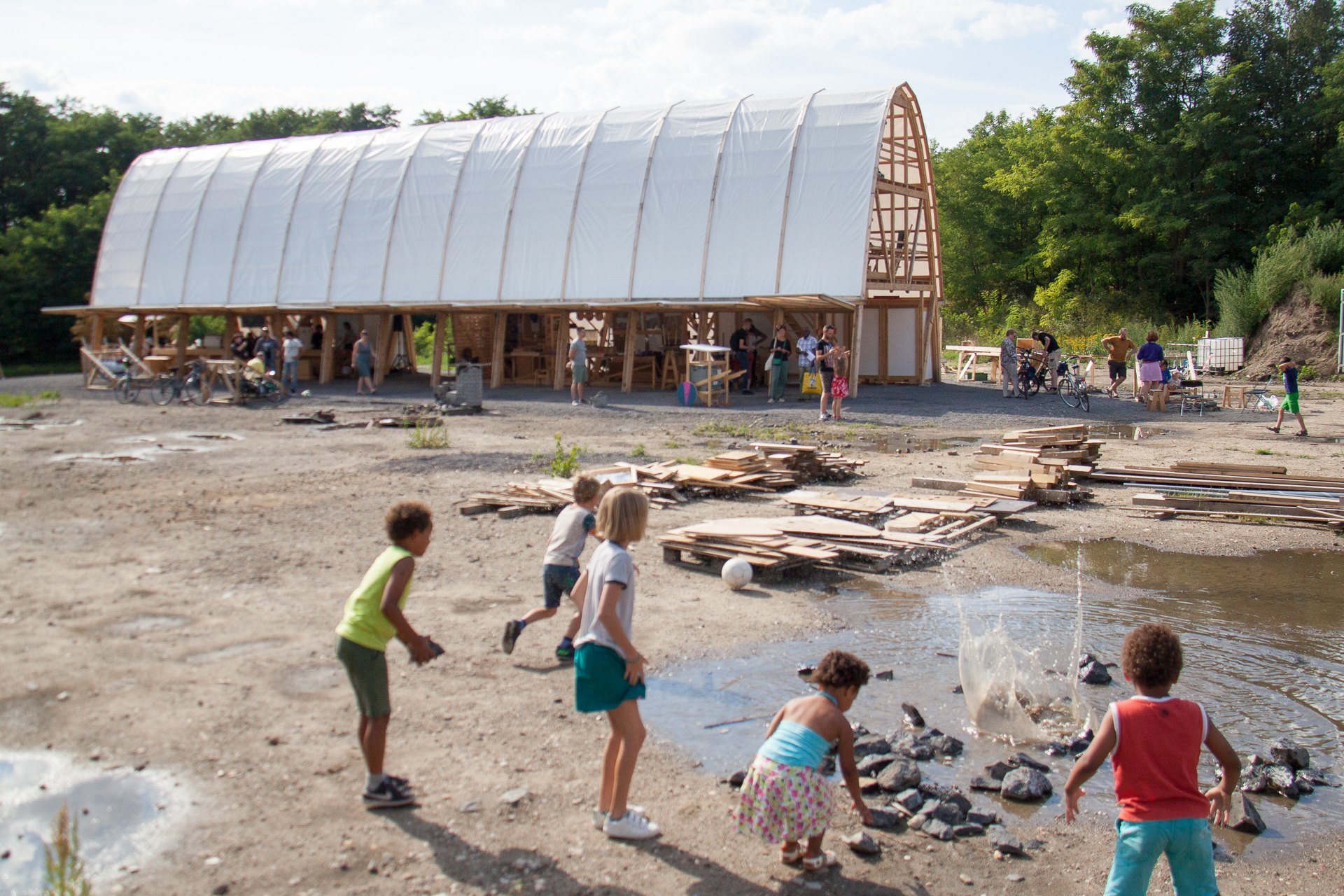
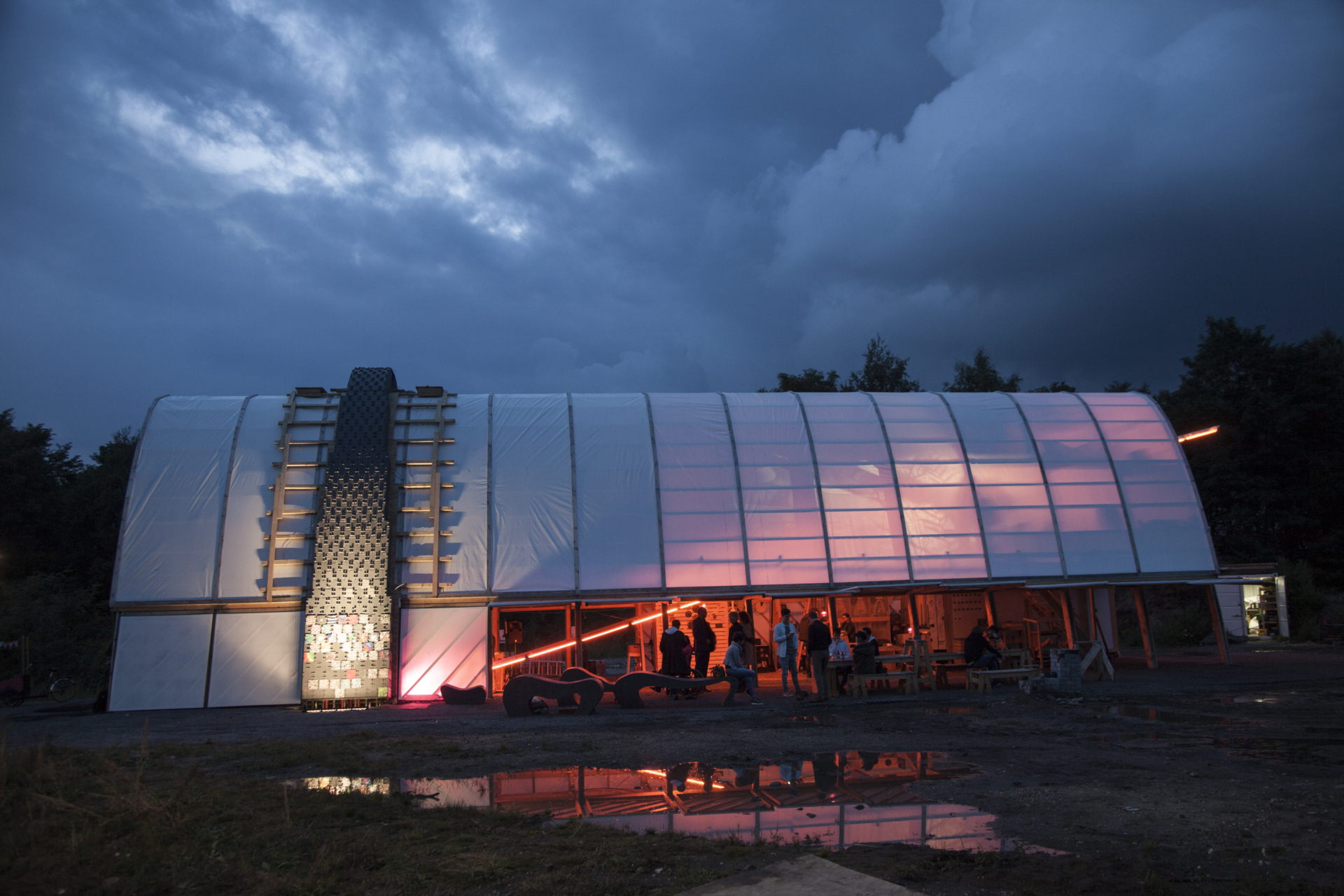


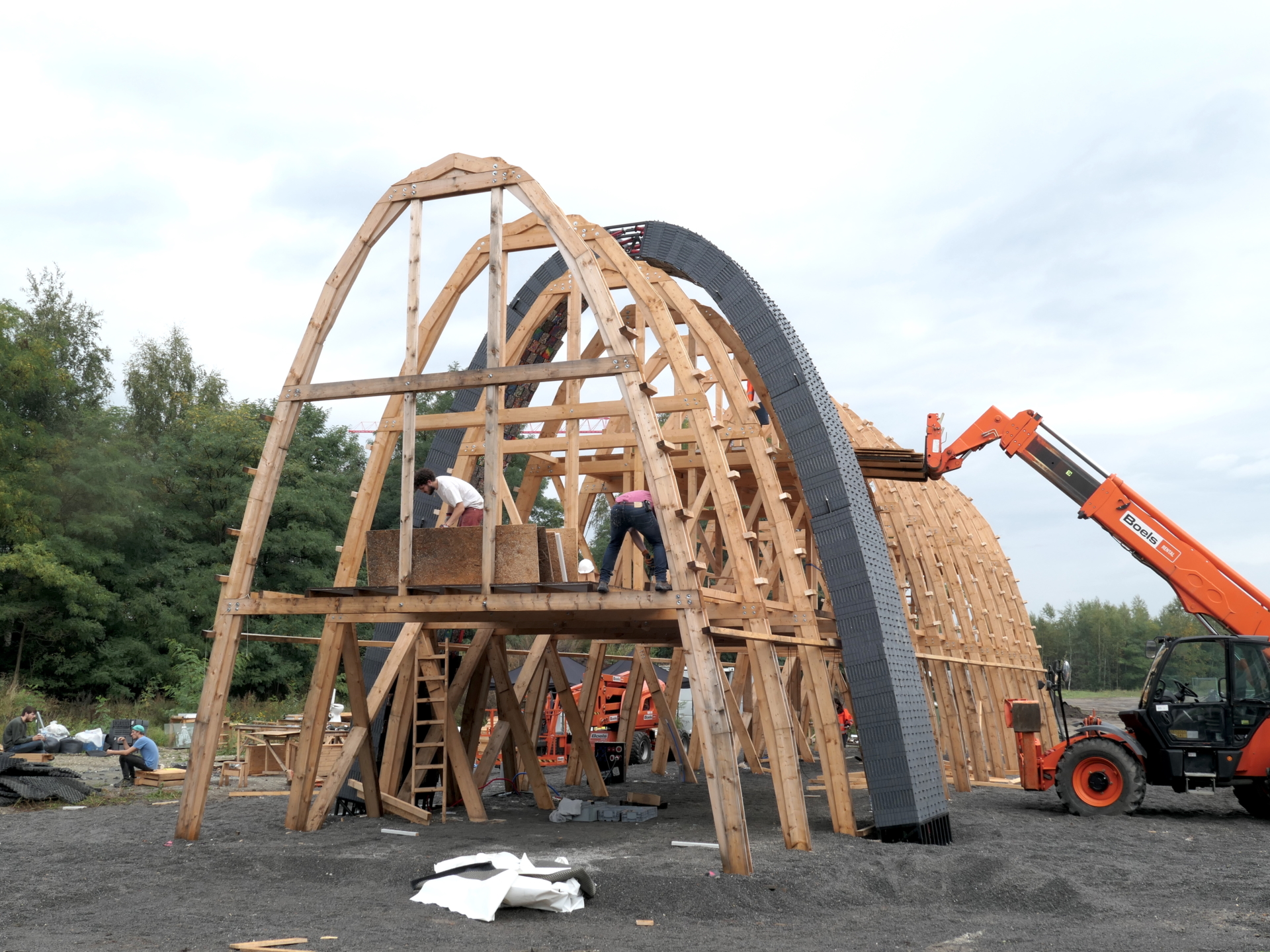
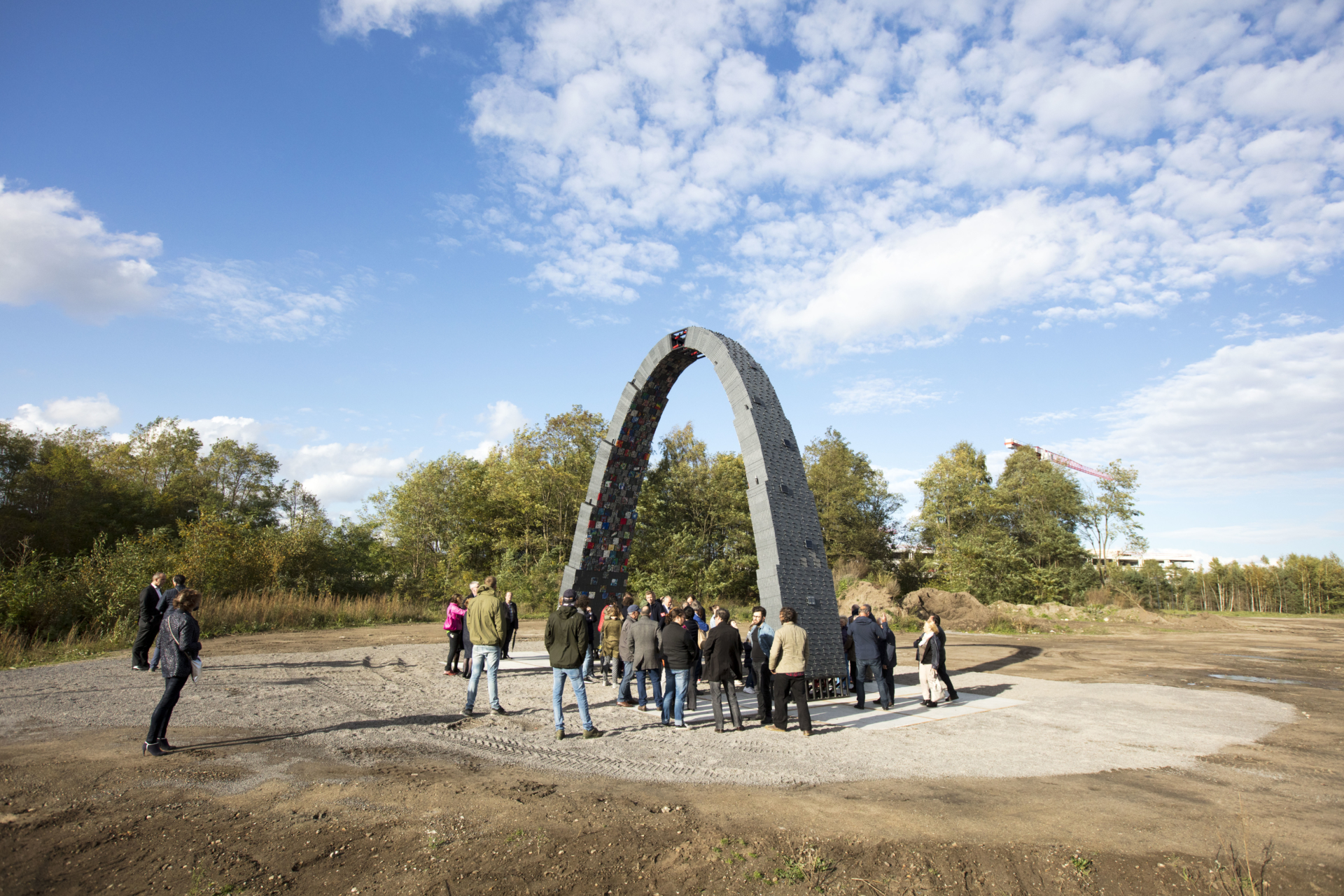

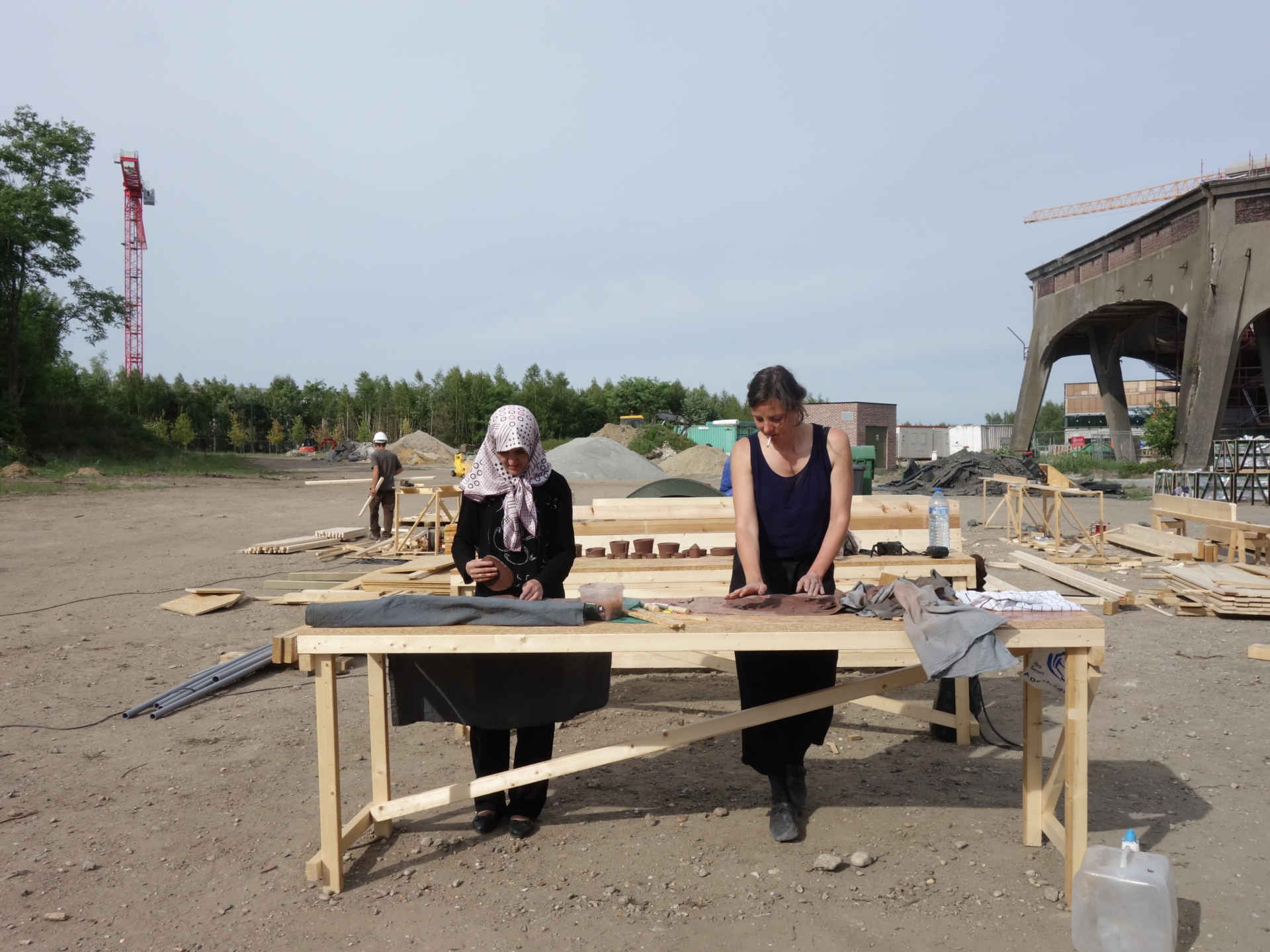
ConstructLab provides a social and experimental laboratory to research material flows, recycling and building properties. It results in an investigation on a new standard brick, applied on a vault construction. A sequence of five residencies aim to find the recipe to turn plastic into gold and to raise, out of hundreds of plastic bricks, a collective arch. ConstructLab collaborates with designers, builders or artists, who possess the same passion for plastic transformations, to take part in this experimentation and to contribute to the adventure.
The Think Tank is the first moment of the active research, which wishes to define a strategy for the arch construction and the plastic brick’s process and to bring ideas together for an assembling system of the arch.
This meeting is connecting the responsible people for the support structure, for the material, machine and brick related residency and the engineers. It result in a simulation of the evolution of the PlasticLab, which will take place on site. We understand and define the outcome that is needed for the following residencies and organise a clear calendar and expectations for the different tests regarding the bricks. We define and specify an assembling system, which also determines the bricks sizes and proportions. Those inputs give a better focus for building the machines and collecting the plastic resources.
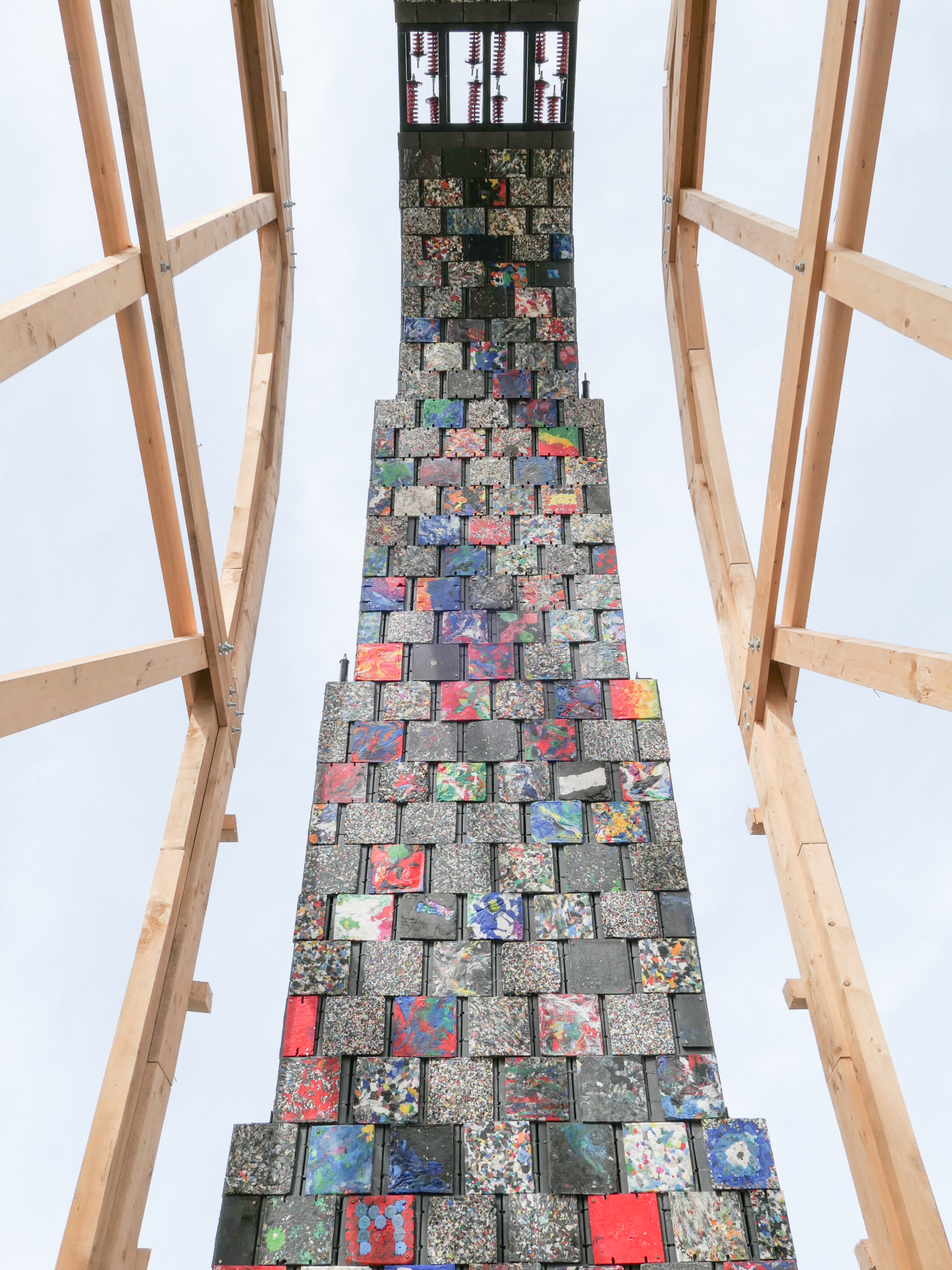

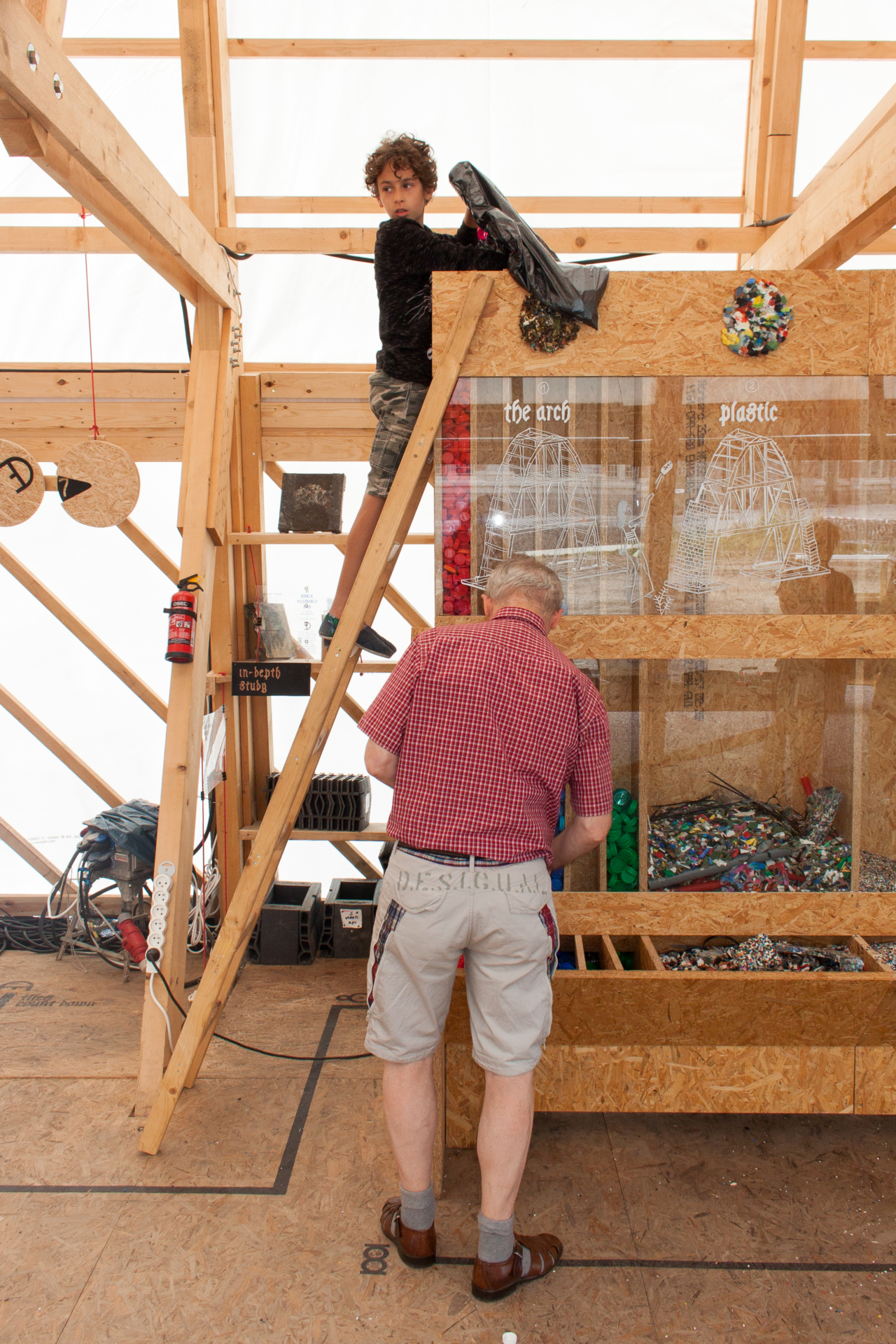
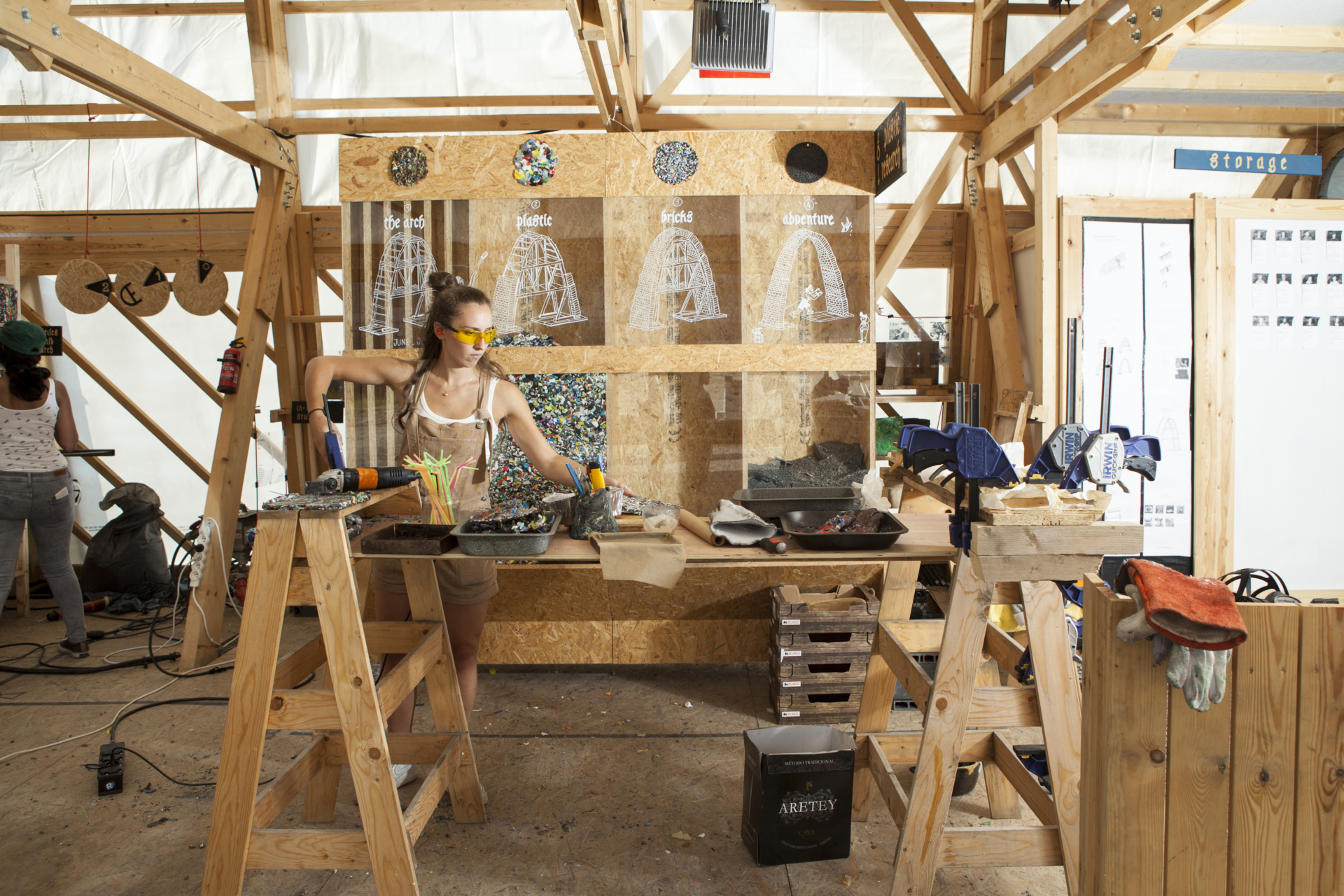
The structure is conceived in the form of a catenary line as a support structure for a self-standing brick arch, but it’s also designed to support life throughout the summer! Hosting our team and guests for over 4 months and receiving a lot of visitors it generates an interesting mix of public and semi-private spaces.
As an open structure it encourages people to pass through The Arch on the ground floor, as a continuation of public space around the old mining site of Genk.
The covering, made from industrial shrink-wrap, gives a strong visual link at night between the inside and the outside of the structure: casting shadows, showing different colours of lights, projections, ..
A typical day at The Arch starts and ends with the opening and closing of the doors.
The doors allow the structure to open completely during the day and to create some intimacy at night. Activities can be organised in or out the structure easily, or even navigate in-between.
The center of the structure is the workshop space. Having the height of the whole Arch it functions as the place where plastic research and fabrication happen but also allow flexible programmation such as concerts, movie screening, presentations… and a lot of dancing.
If the workshop is the machinery of The Arch we also need a lot of fuel! A kitchen is born.
It is designed so the counter for cutting vegetables and preparing food also serves as the bar for visitors. Preparing food while talking to a curious passerby makes for a quite direct and intimate conversation, and of course letting somebody taste fresh food is always a good start.
In The Arch we had two toilets and a shower, built onto the gravel ground floor, creating a situation where you are inside with some comfort but actually still very much outside.
A beautiful addition was our make shift temporary pool to survive the Belgian summer heat wave.
The first and second floor consist of more private spaces, separated from the public by only a staircase.
On the first floor is the office, connected to the bedrooms with a bridge.
Every inhabitant or long-term resident have a personal bedroom, allowing them to have some more privacy. Although with the white shrink-wrap light and shadows can be cast from bedroom to bedroom, creating an intriguing play between rooms..
The use for the top floor turns out to be quite varied!
Initially designed to host bigger groups of people it was also used as a yoga space, concert space, a place to hang laundry and cosy film-screenings.
Now all the components of The Arch are hiberating in a container somewhere in Genk, waiting to be picked up and (re)arranged!
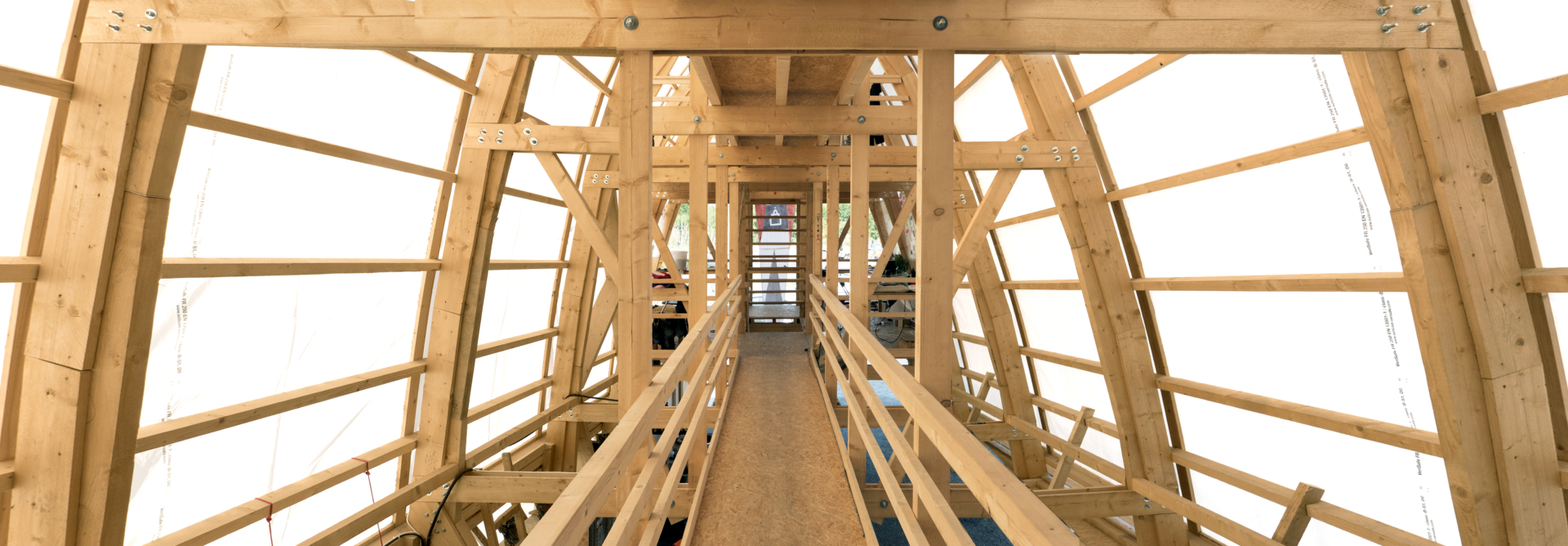
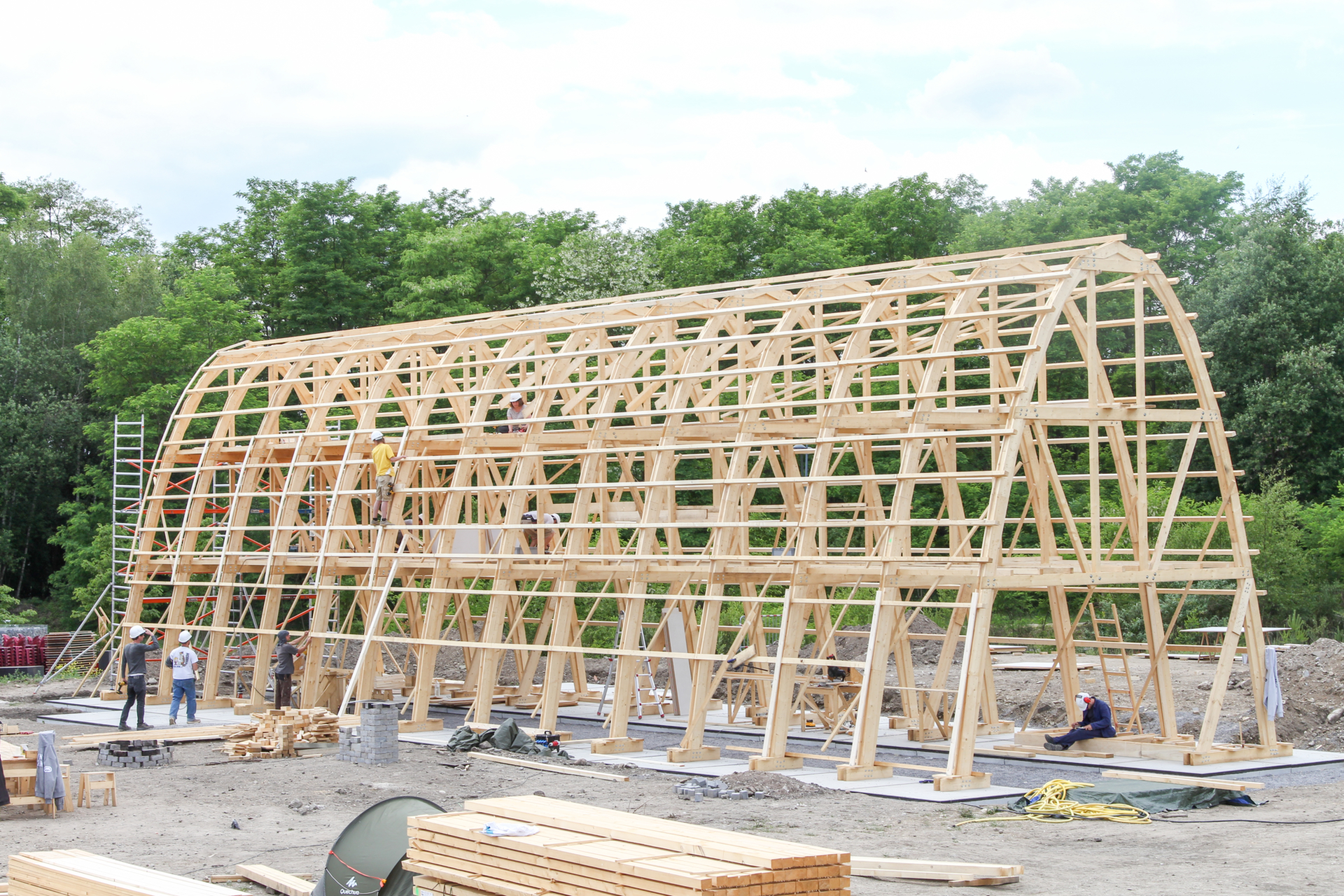


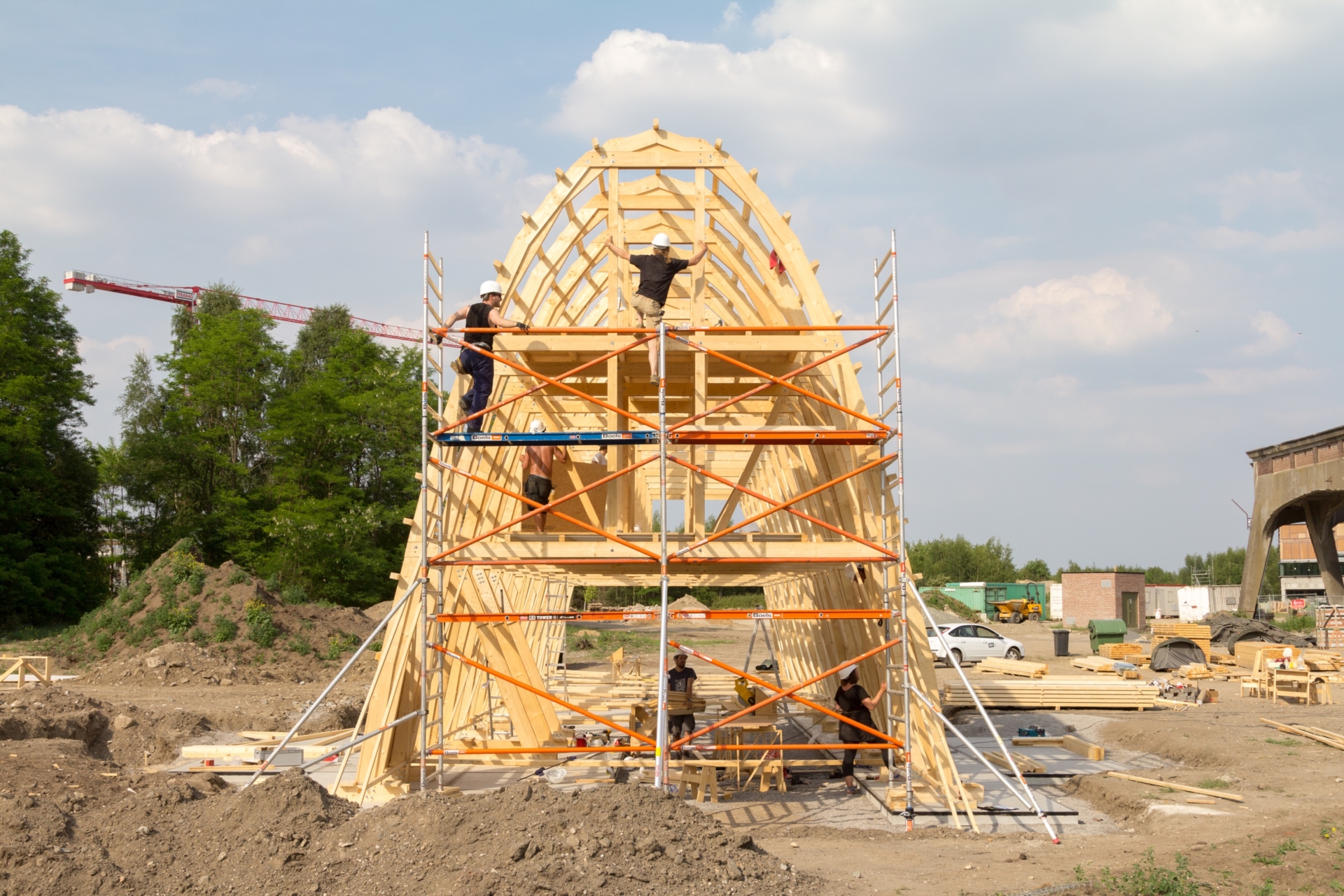
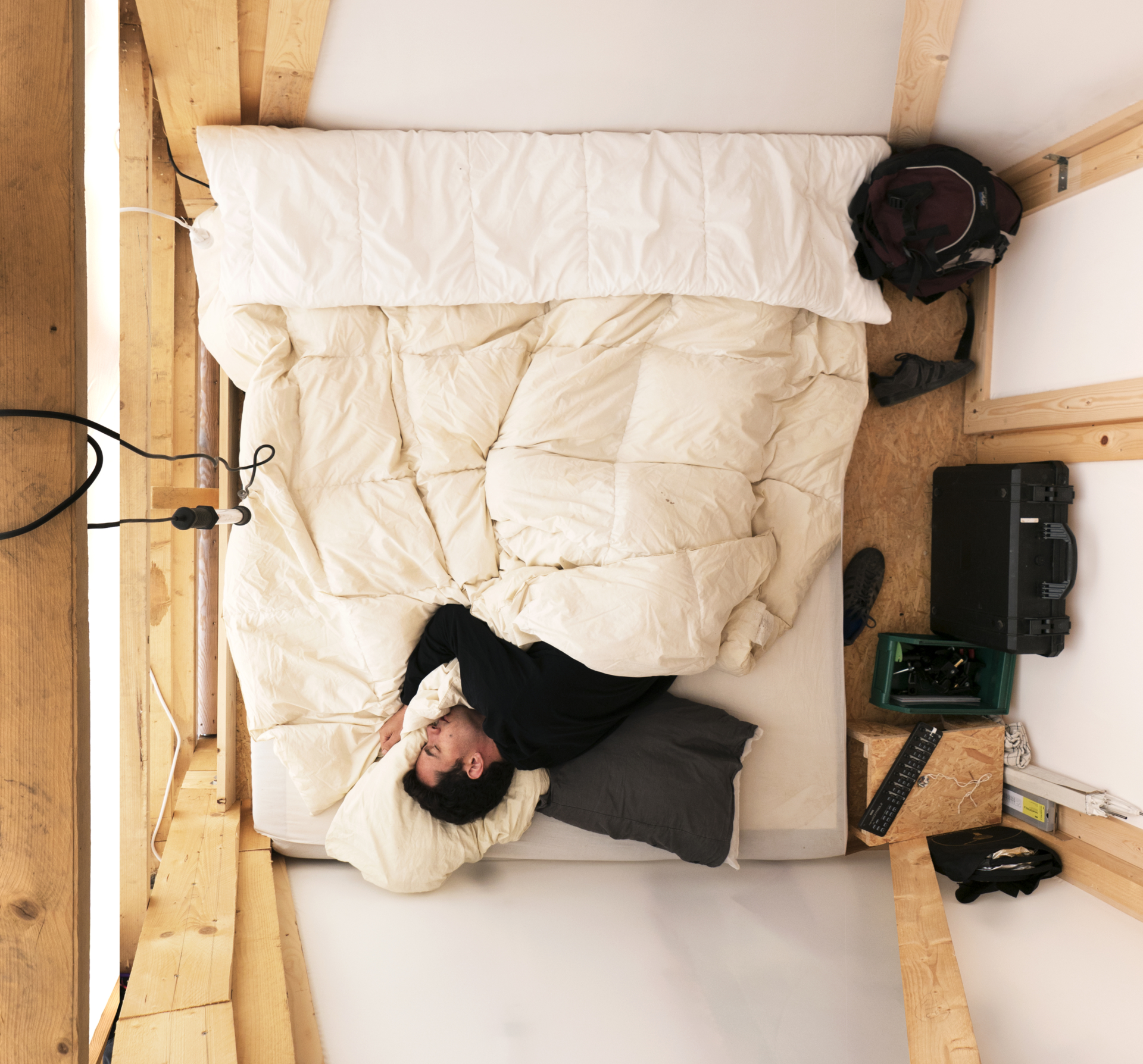
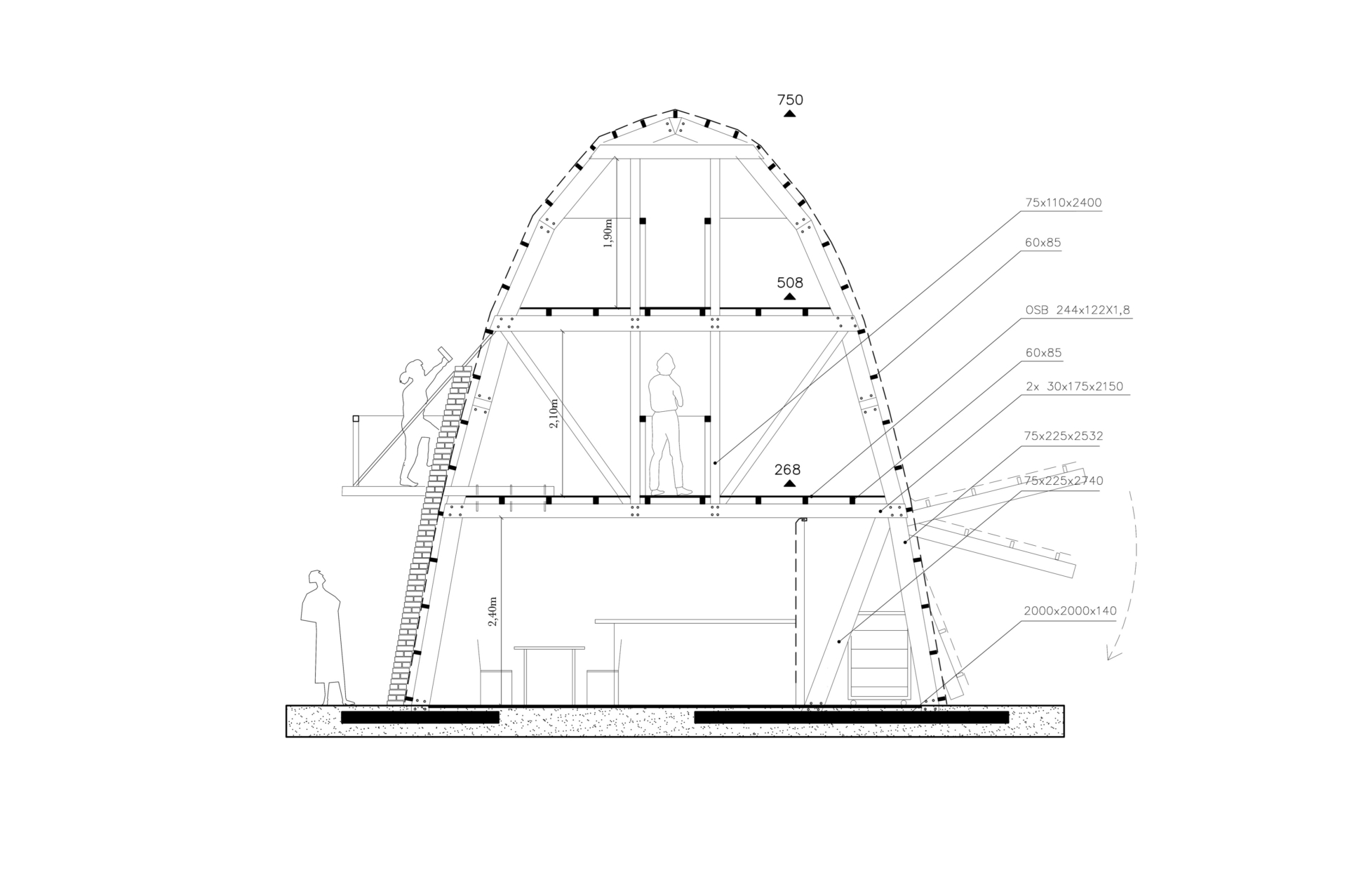

In their one week residency, the Bagnolet-based collective ya+k, who have an extraordinary expertise in working on local, participatory, one-to-one situations, were asked to develop a satellite project of the Arch that would gravitate around the site and create a visibility of the project. It was supposed to be a transportable, but not too easily stolen object that simultaneously functions as the collector of thousands of bottle cups that would be needed for producing tiles in the weekly workshops on site, to eventually cover the Arch. The Saint Plastic became a member of the big family of tools that were developed within the plastic research lab during the summer at the Arch – and its most successful PR manager. Carried by six people in a slow procession down the busy shopping street of Waterschei, Staalenstraat, Saint Plastic became acquainted with the neighbourhood and henceforward was recognized by the people for its alien but well-intentioned character. Parked in front of the biggest supermarket of the district it filled up its drawers within days and did not seize to appeal curious gazes and colourful bottle-cups. The Saint Plastic is a small precise model of the bigger Arch structure, just as the Arch is a model of the city – bringing up question of how we live together, how we share, who does the dishes and how do economies of a collective work; how do we distribute tasks and what role does each individual take? Over the model of the model and with much patience and attitude the members of ya+k shared and debated their visions of being together with all the other residents of the Arch.
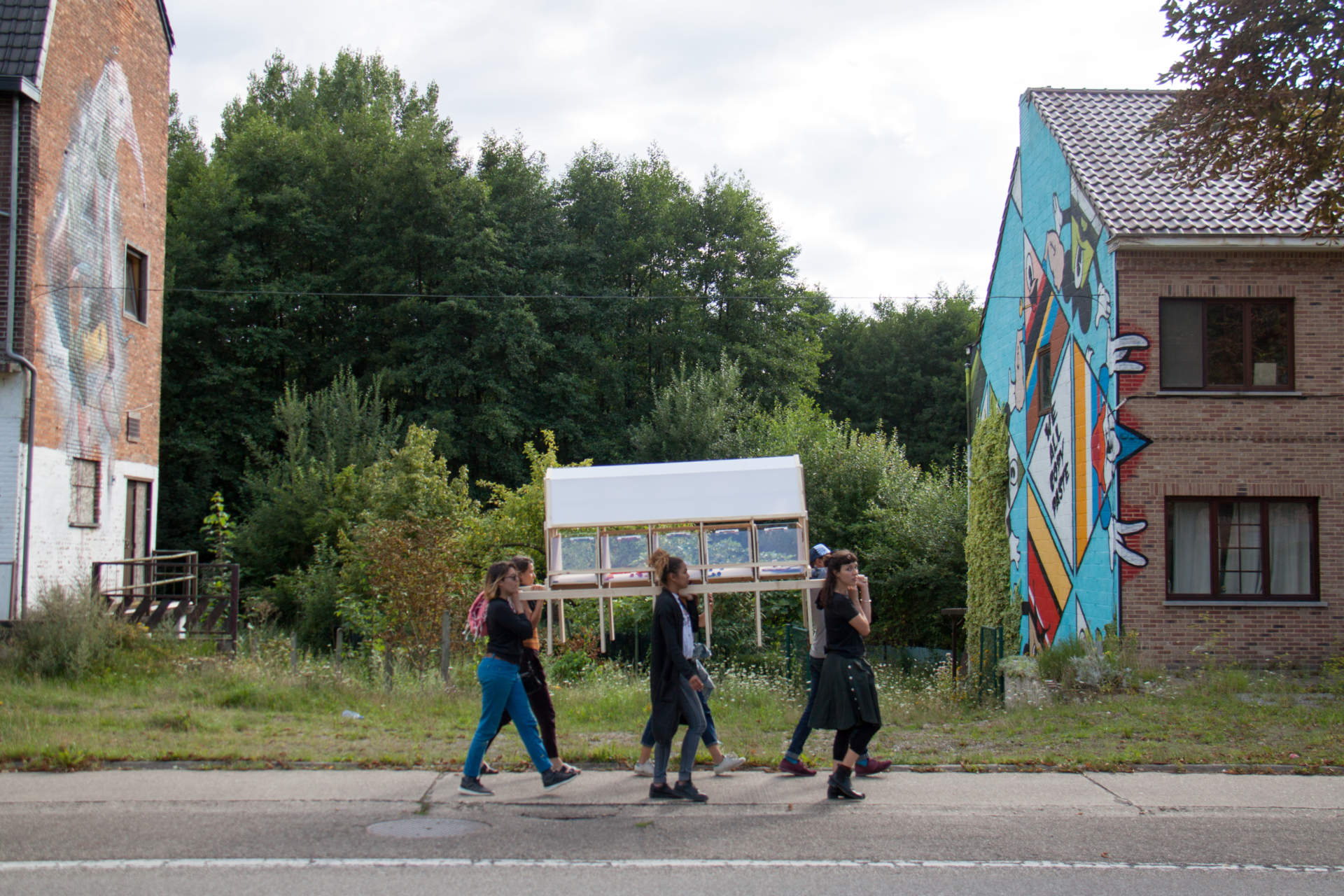
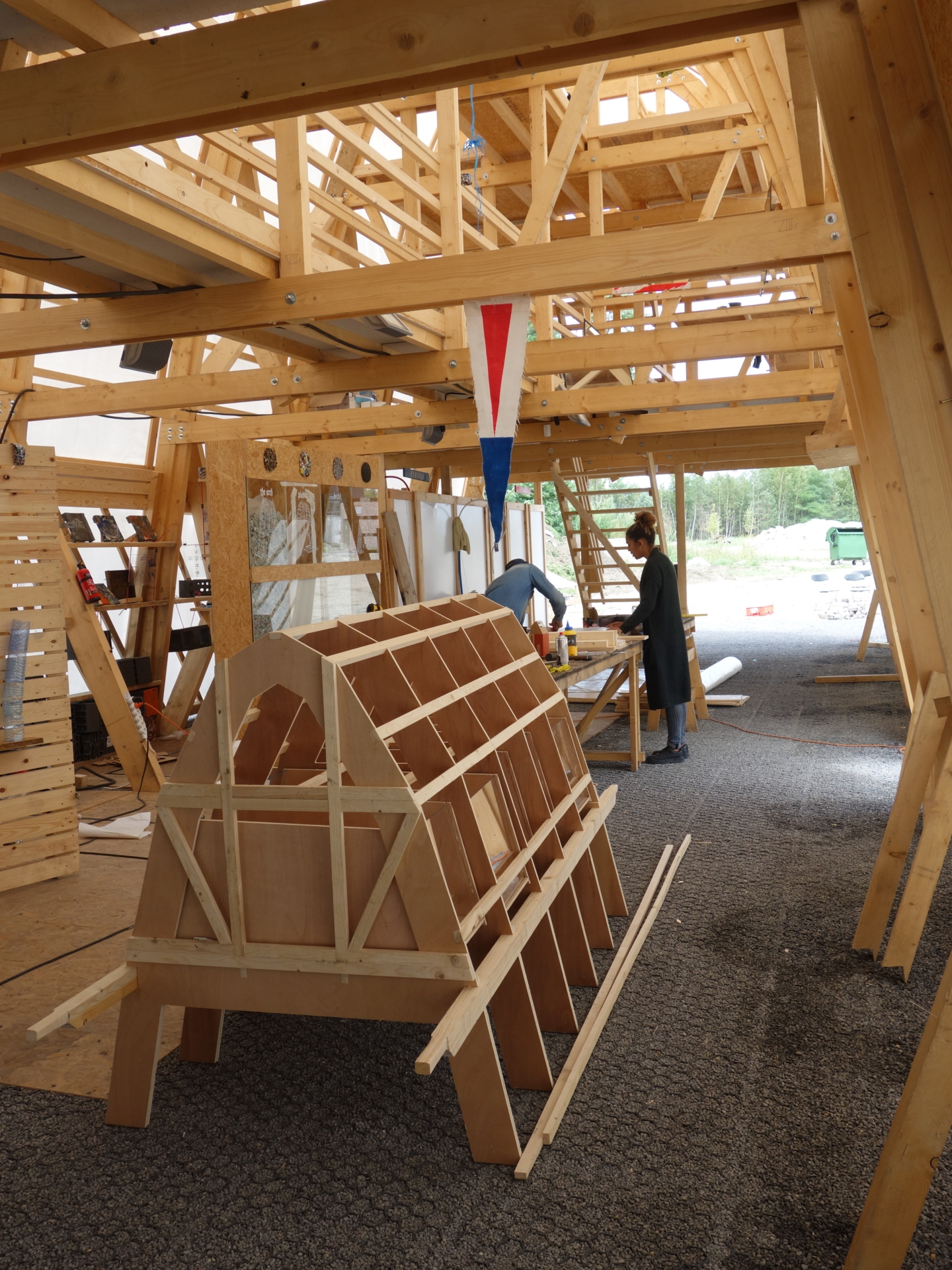
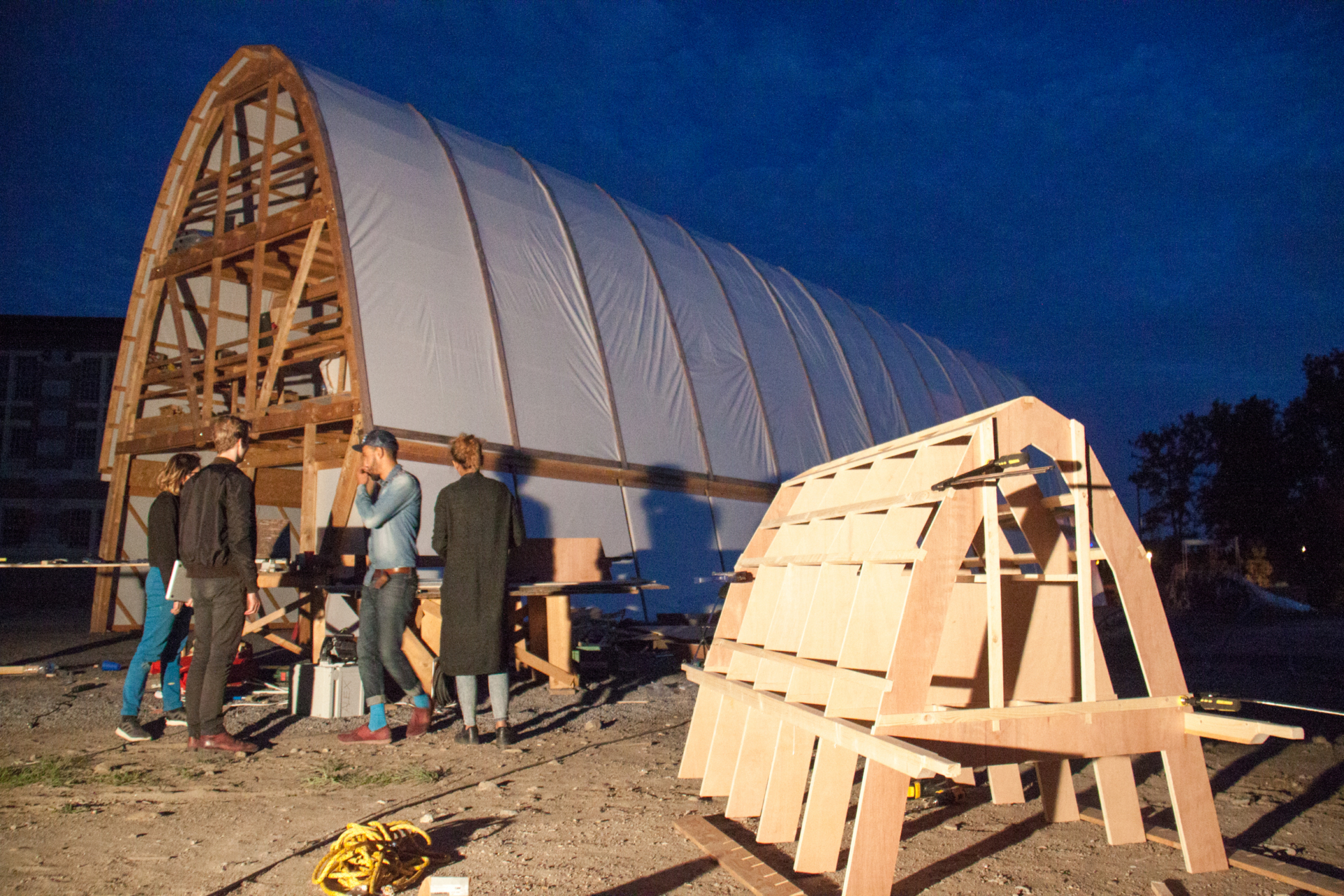
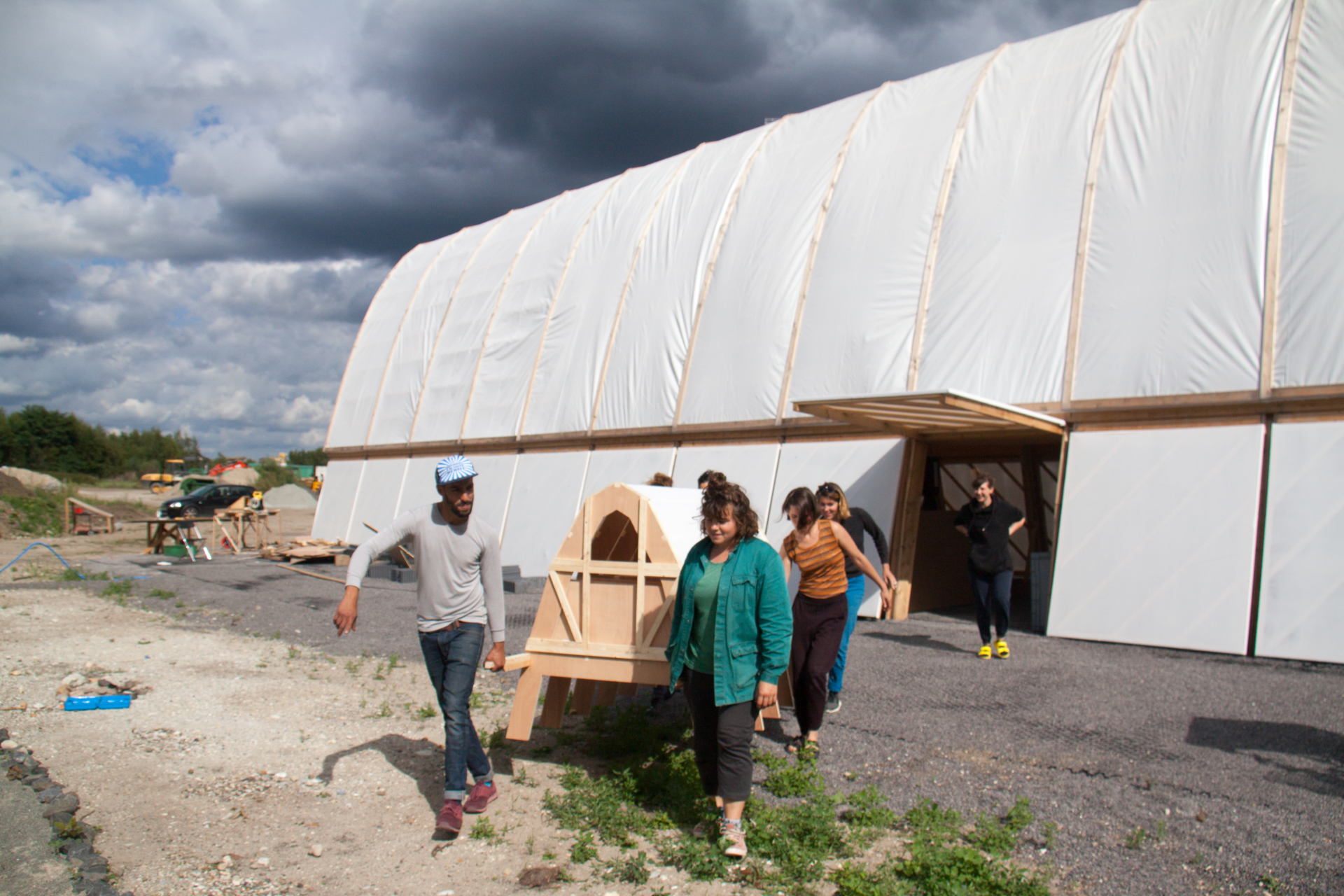
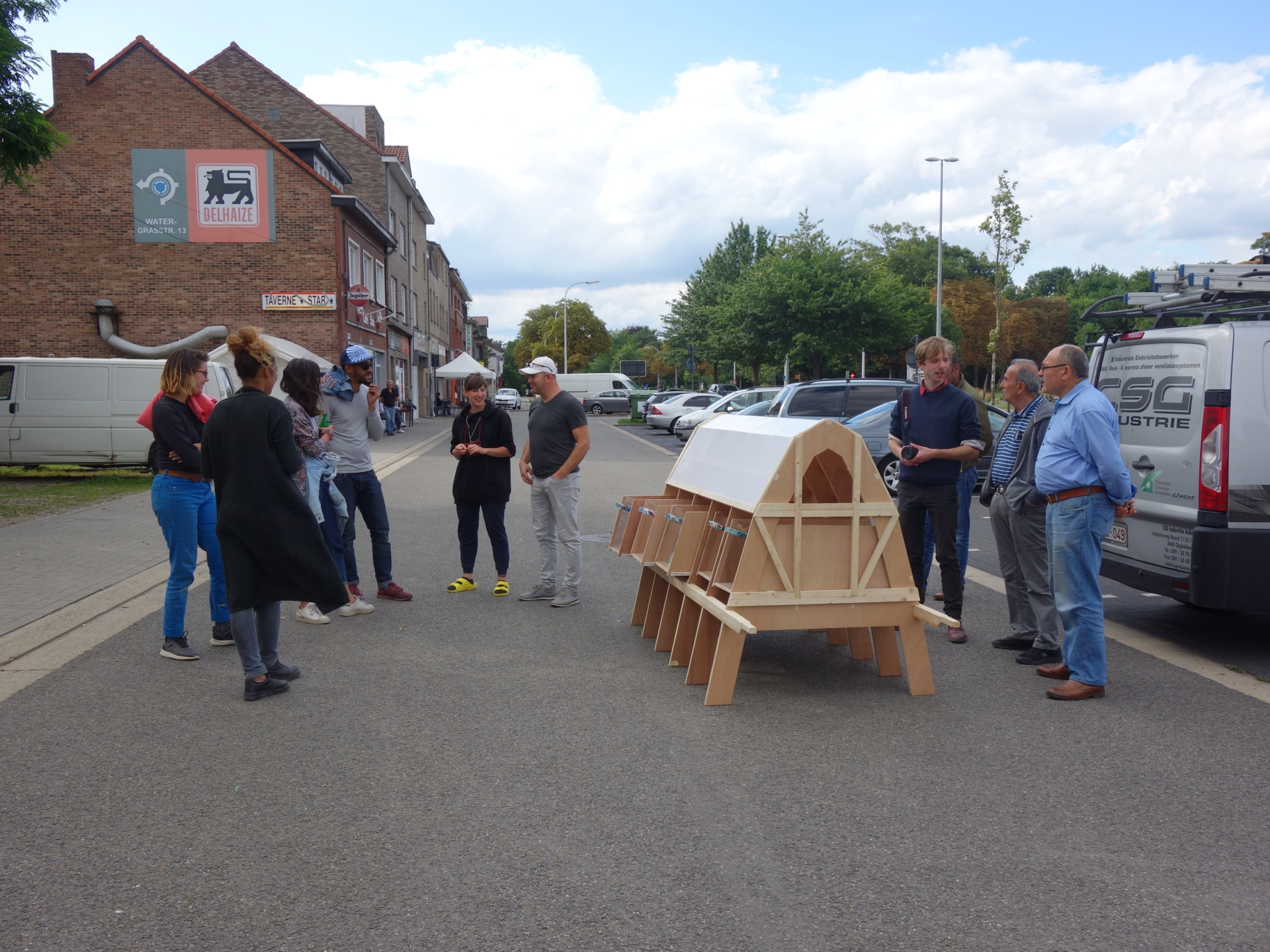
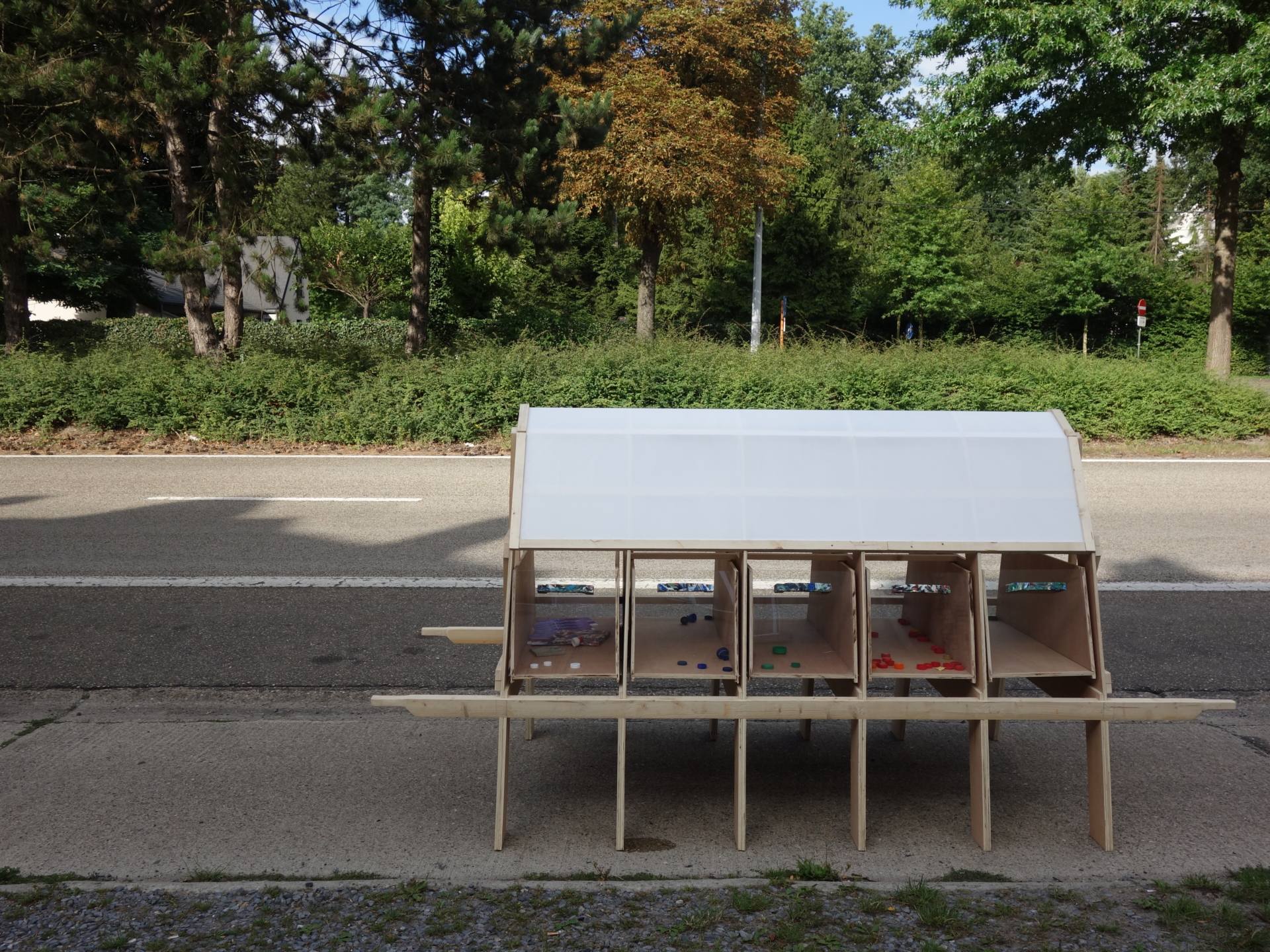
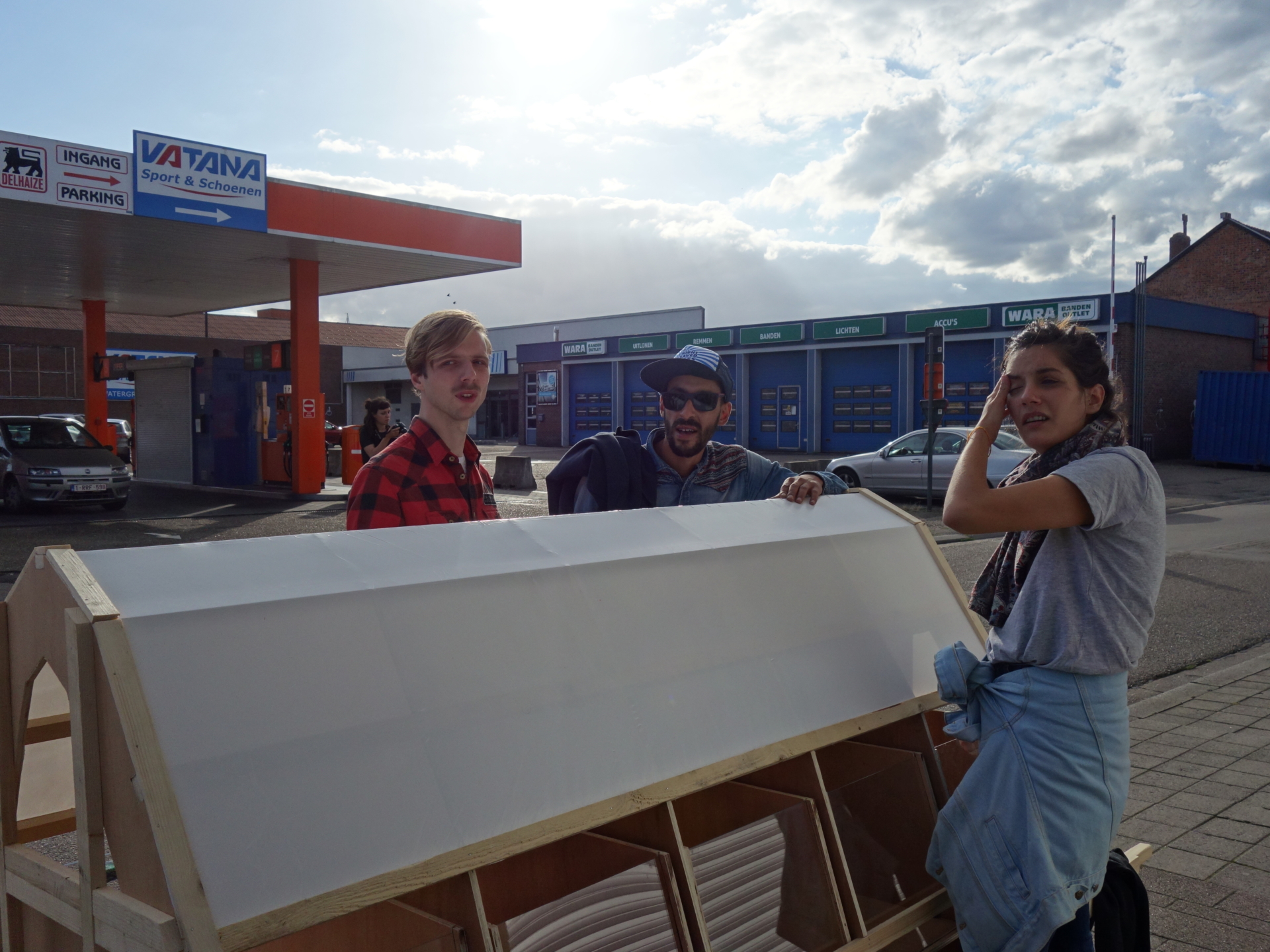

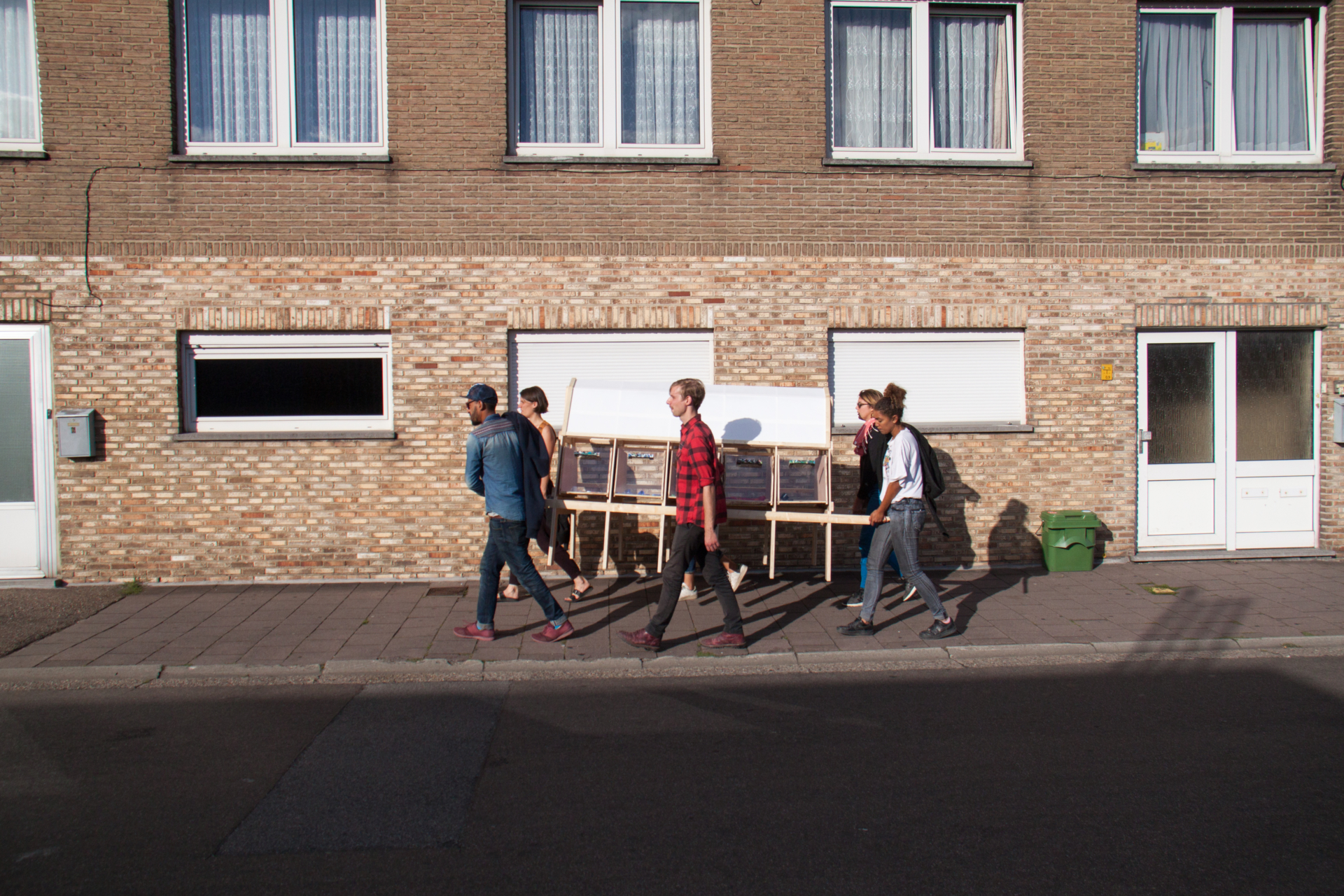
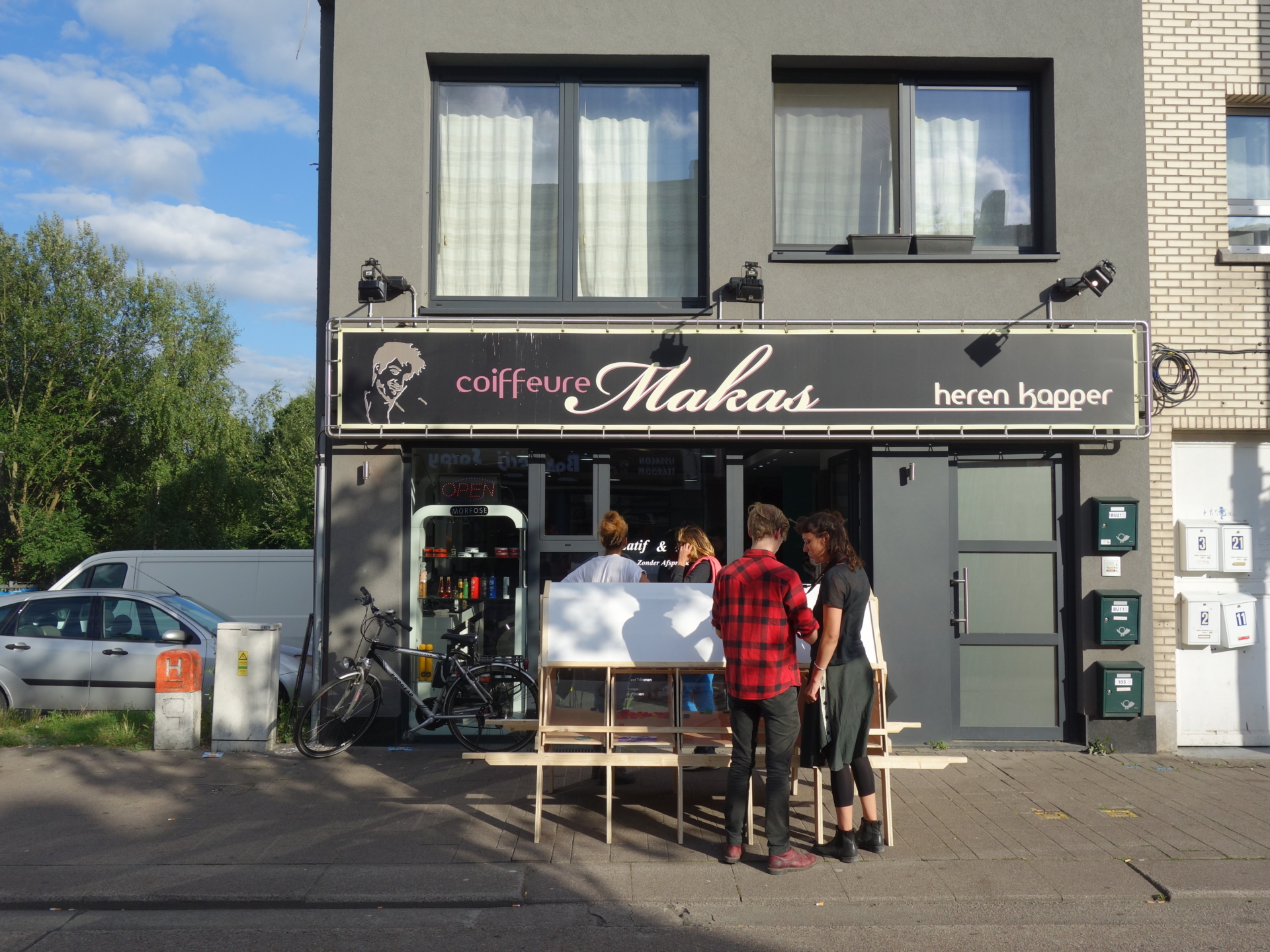
The Fire Kitchen was guest at the Arch in Genk in June 2017. Johanna Dehio and Mascha Fehse transformed raw materials, namely vegetables and clay, into a usable kitchen unit and fully set dinner table, with the participation of interested people from the region and Vrouwencentrum Genk (women’s center).
The aim of this residency was on one hand to develop an easily repeatable workflow for producing simple objects, such as a cup, a plate and a bowl, for the Arch kitchen and for the use by its inhabitants. This format can be repeated during the summer to enlarge the kitchen equipment and to propose the workshop to a public, sharing the knowledge. A manual is available at the Arch.
On the other hand, large cooking objects were developed and built, such as a stove, a tajine, a comal, a natural refrigerator, several jugs and large bowls. They were formed from clay next to the saws chopping wood. The left-overs from the wood construction were heaped up on the mountains of temporarily stored and yet to be incorporated building material to create an unreal archaic setting in a brief artificial landscape. A big fire was lit in which the ceramics were baked. The landscape around a mine looks like it was painted black. The extracted earth that the terrils are made of and that was replaced by tunnels to reach the deep reserves of stone coal resemble our clay objects that took a deep matte black colour in the reduction burning. This appearance is alien in the colourful feast of recycled plastics, collected from the neighbourhood and exhibitd at the arch, but yet relations can be traced. To celebrate the start of the cohabitation of these distant relatives – coal, oil, plastic, clay – a feast was prepared, food cooked and shared around the table with builders and visitors.
